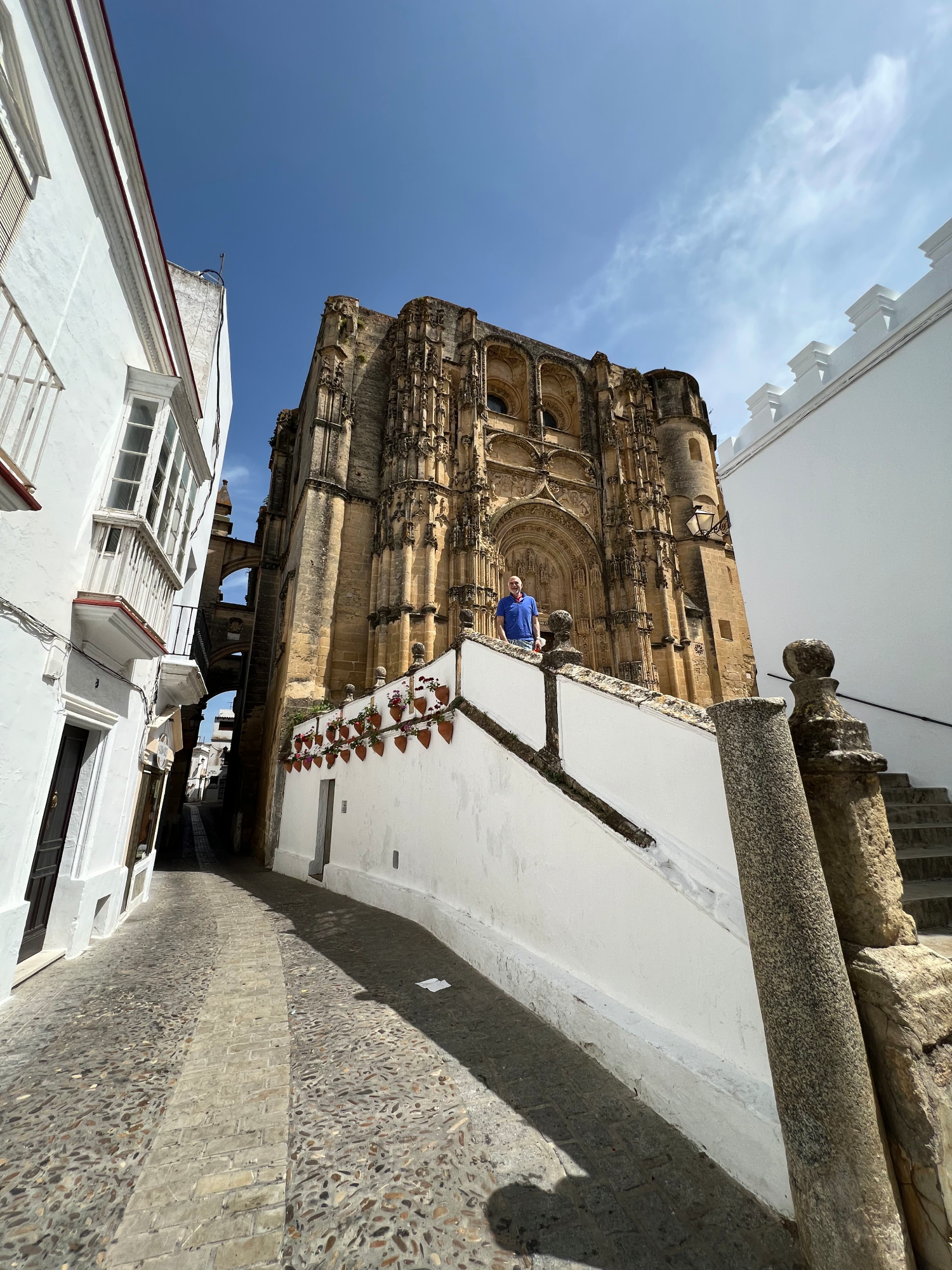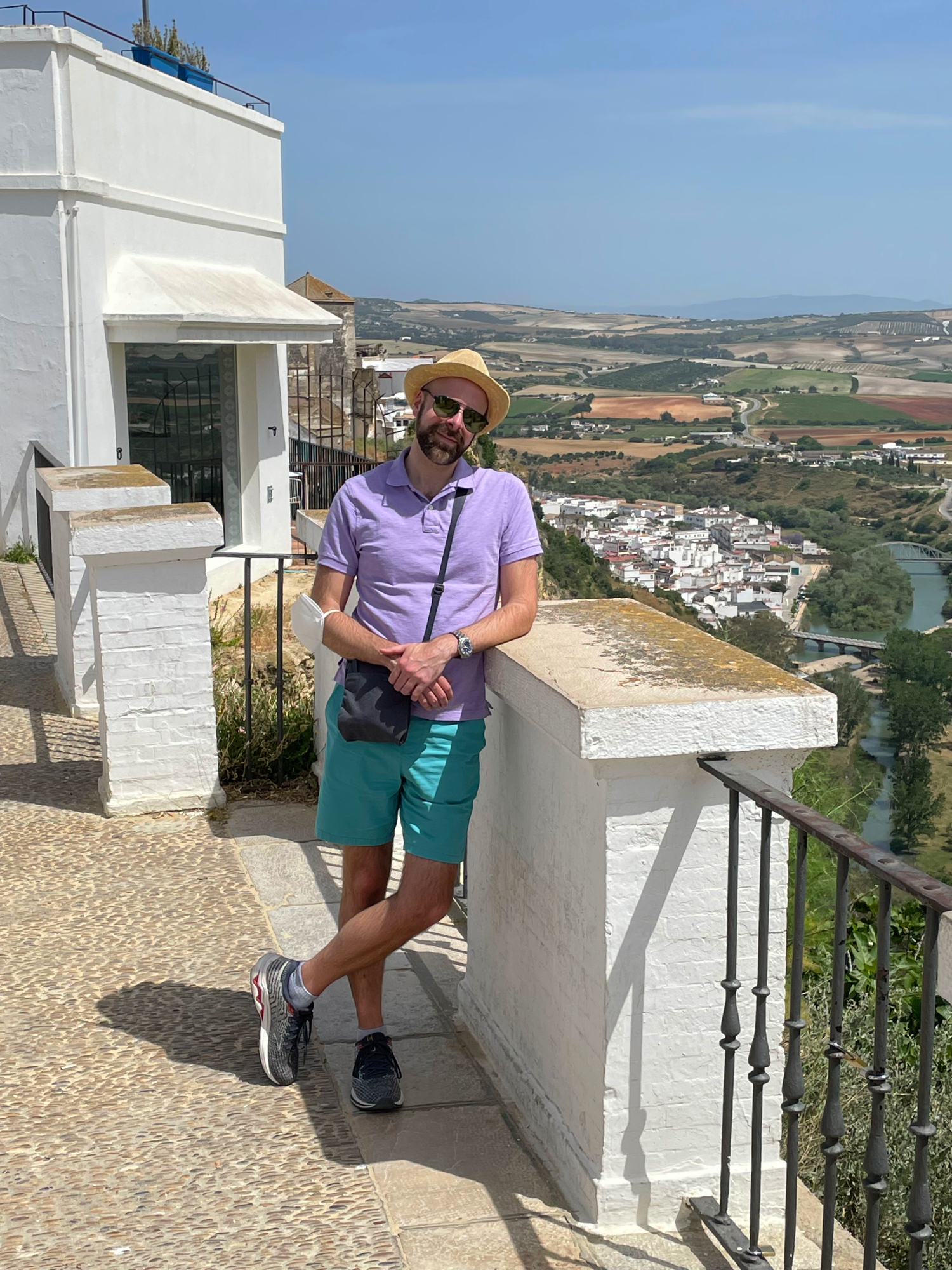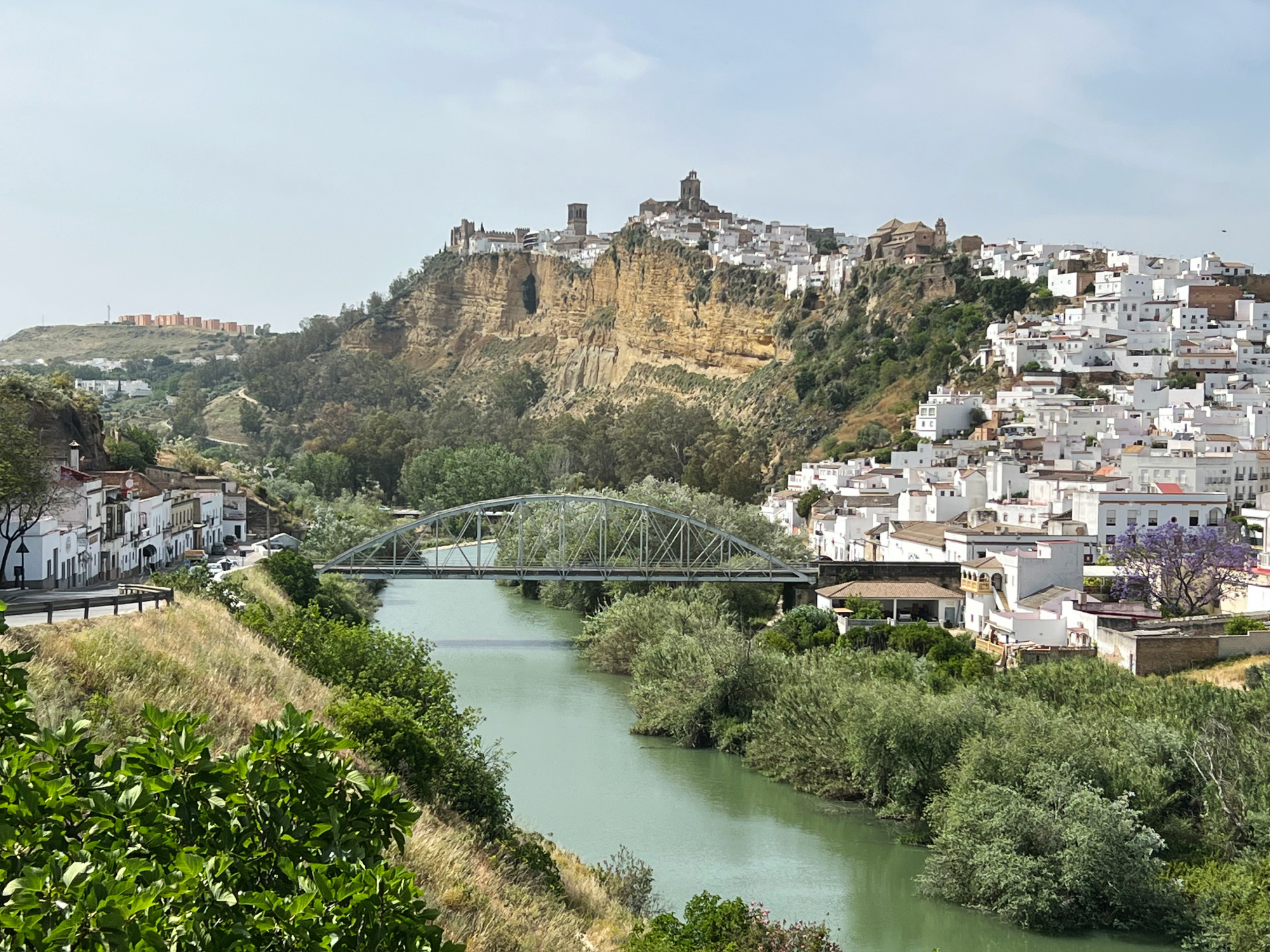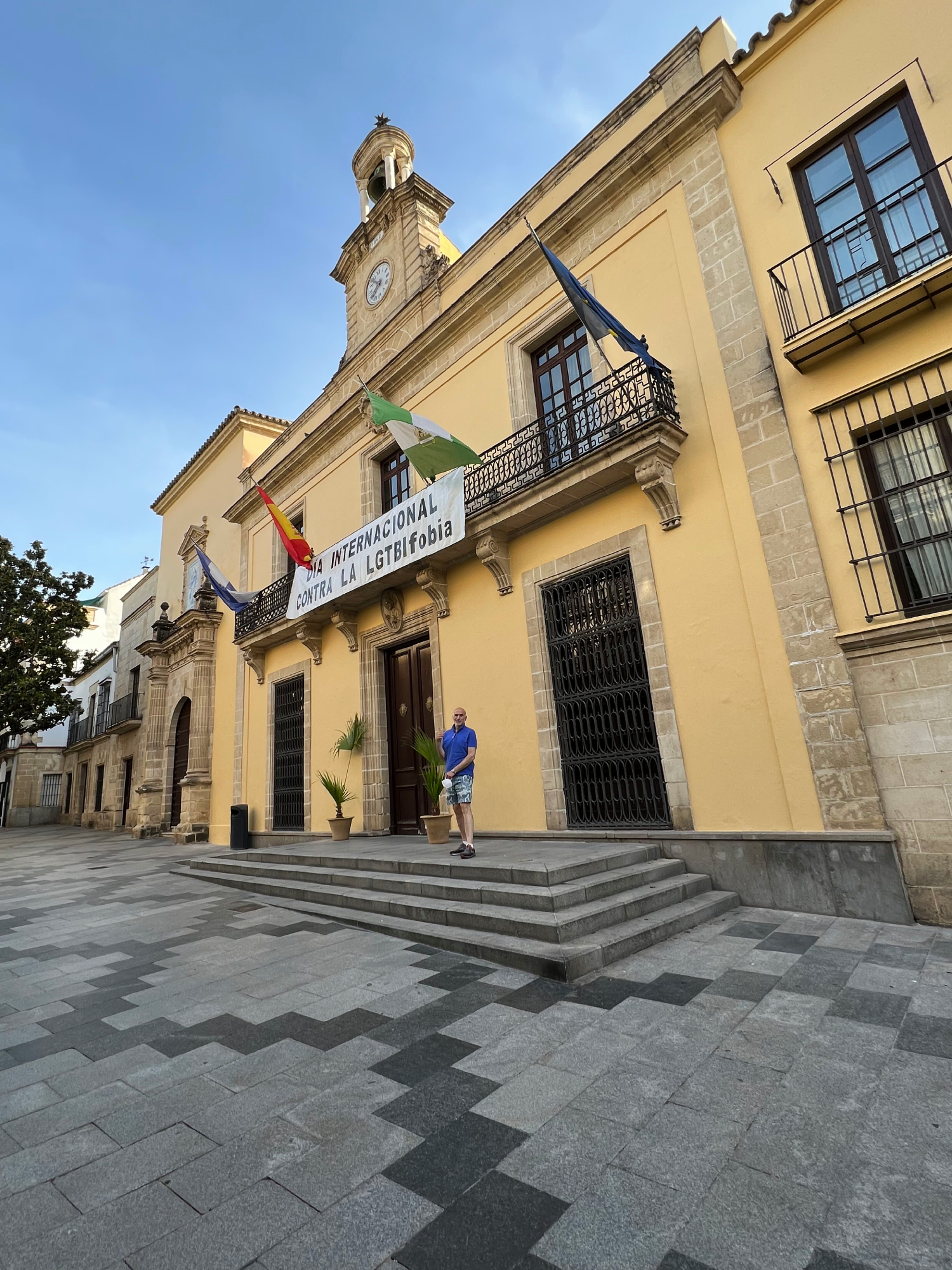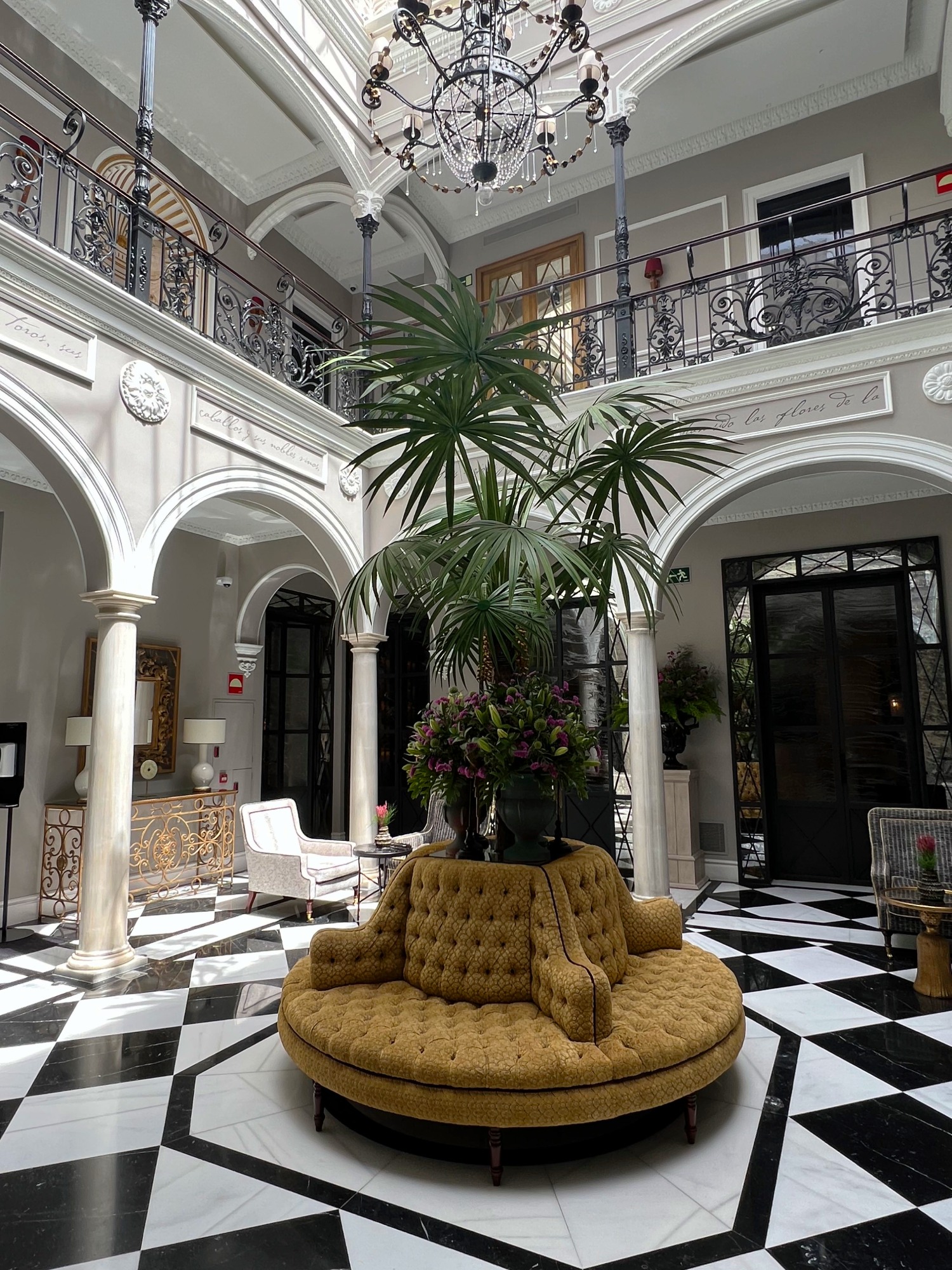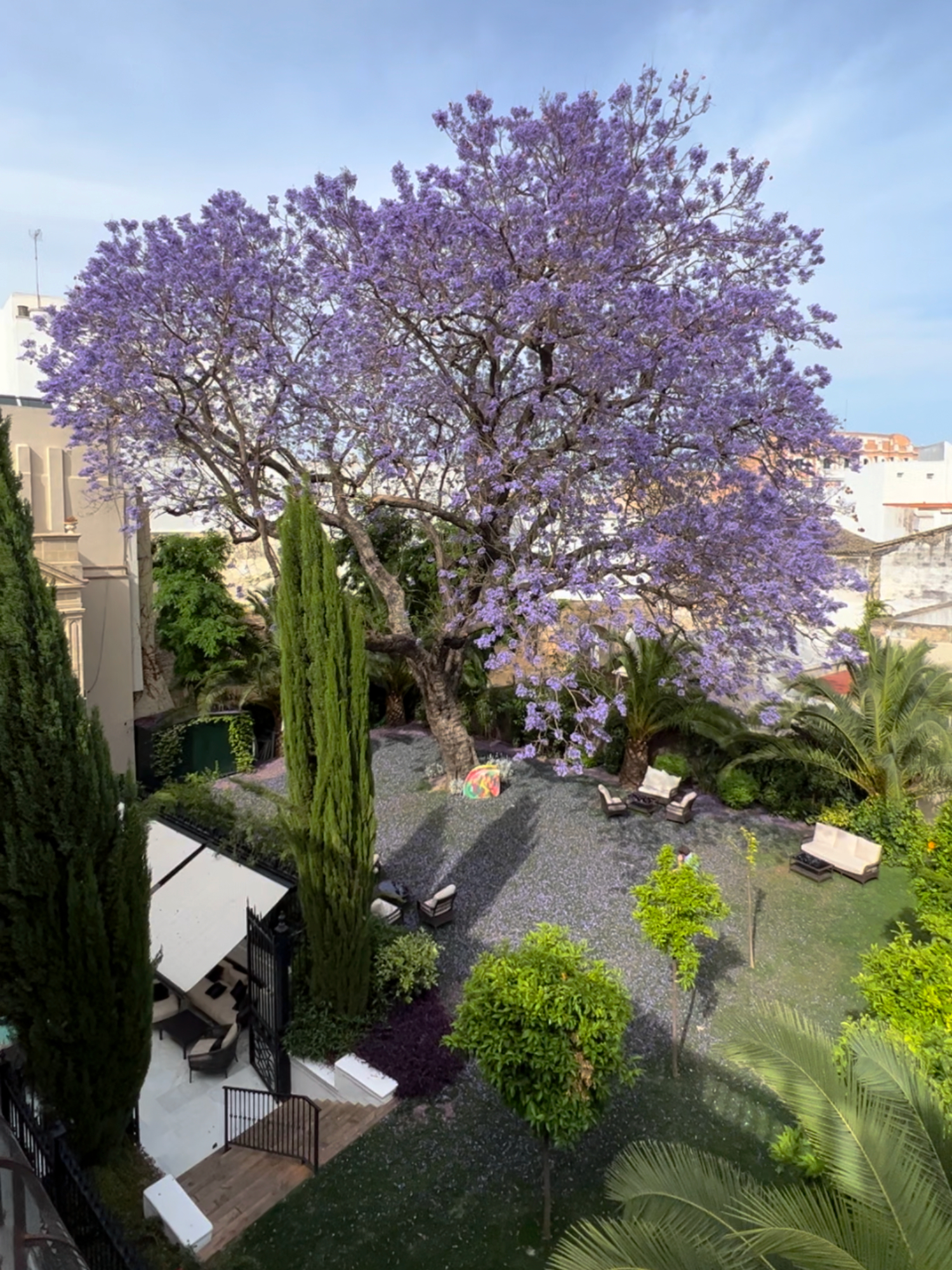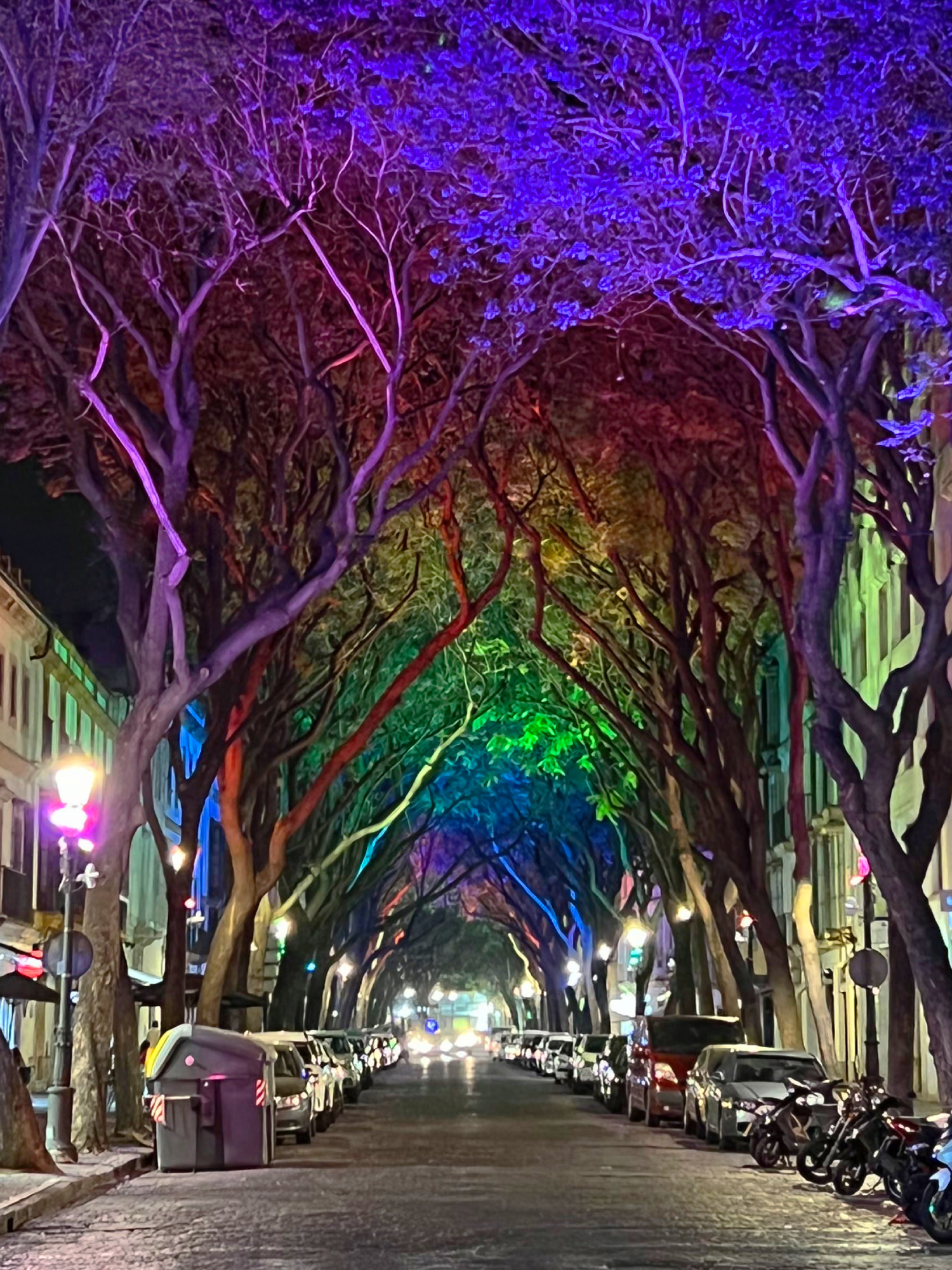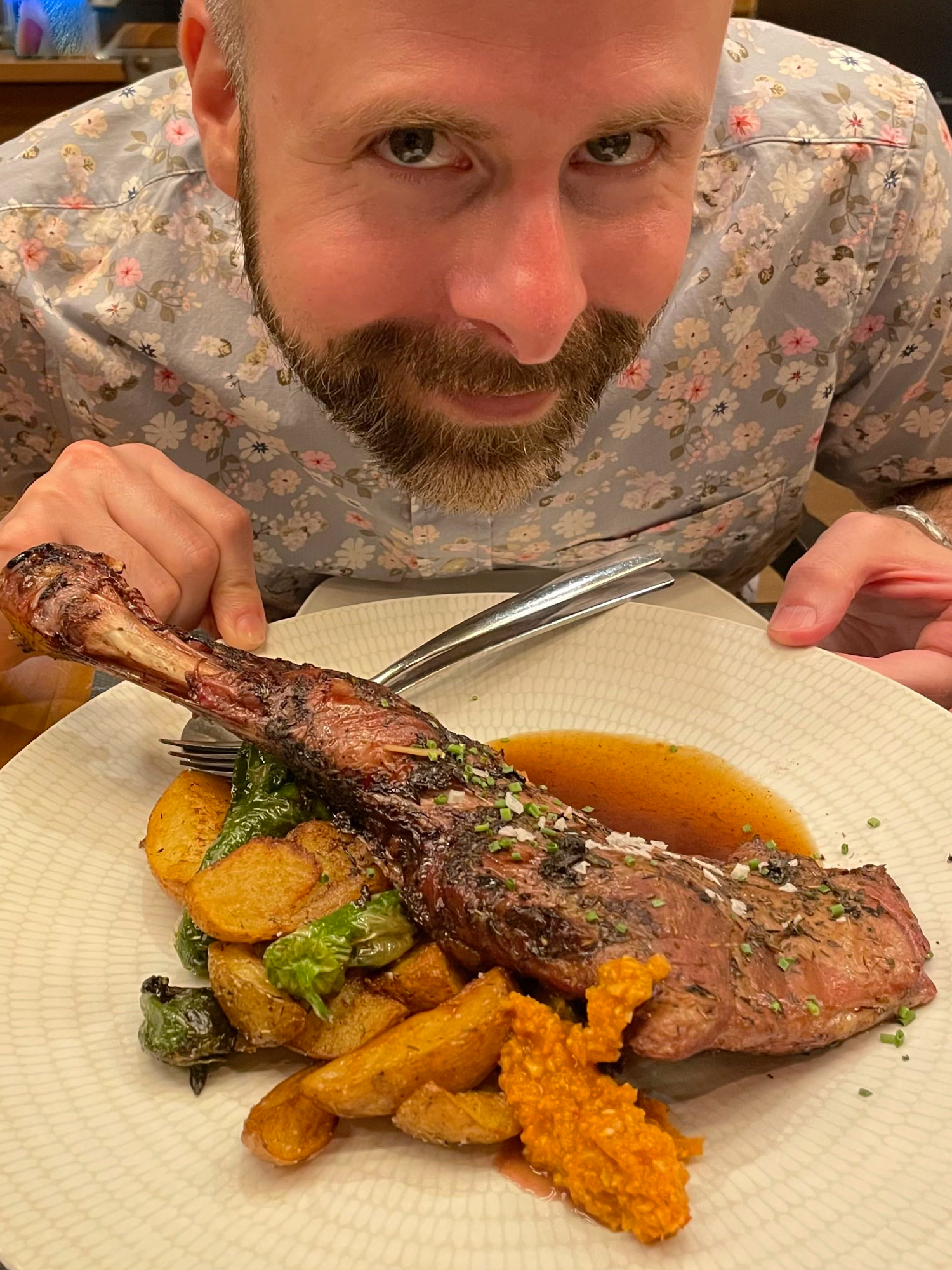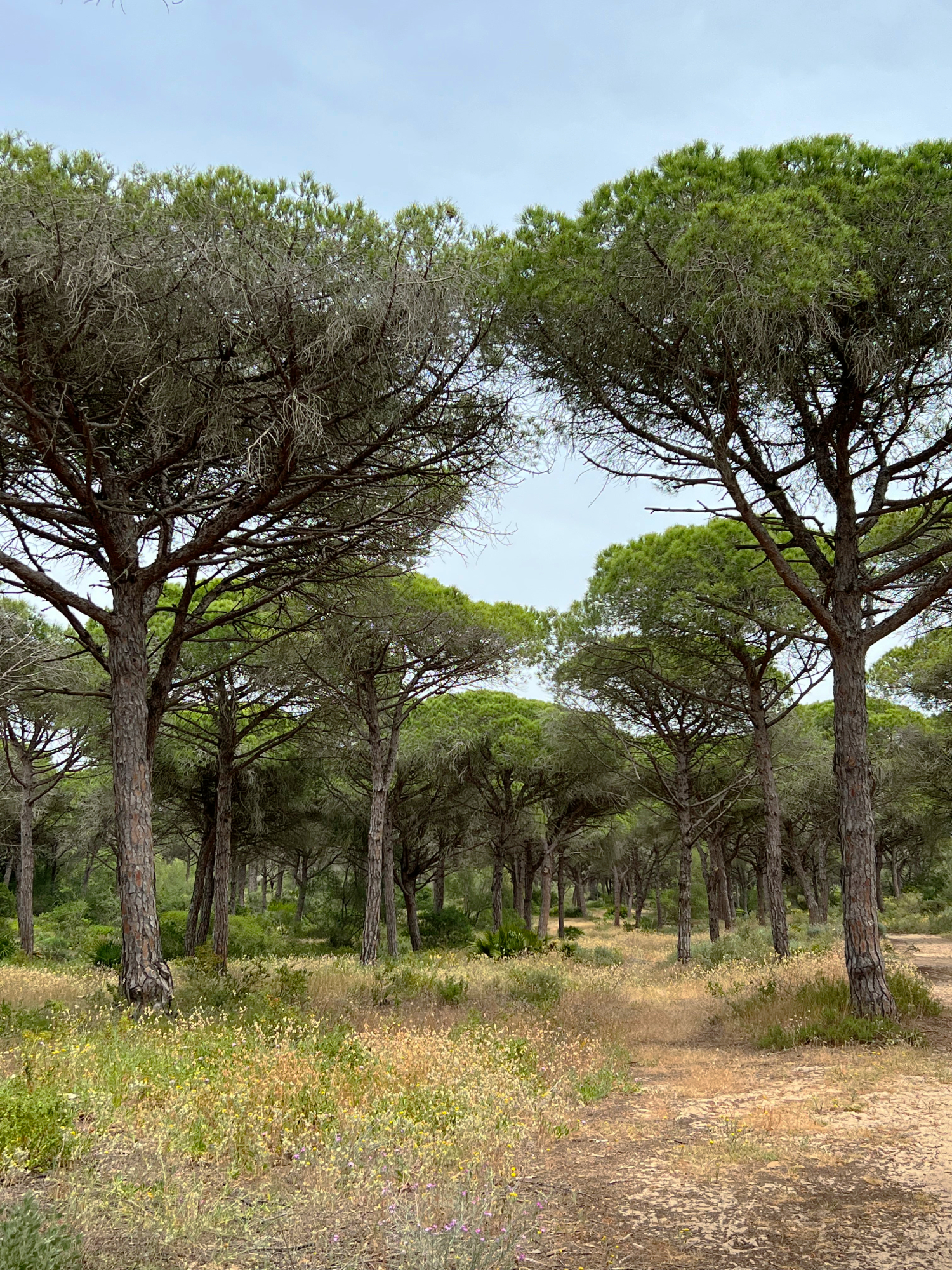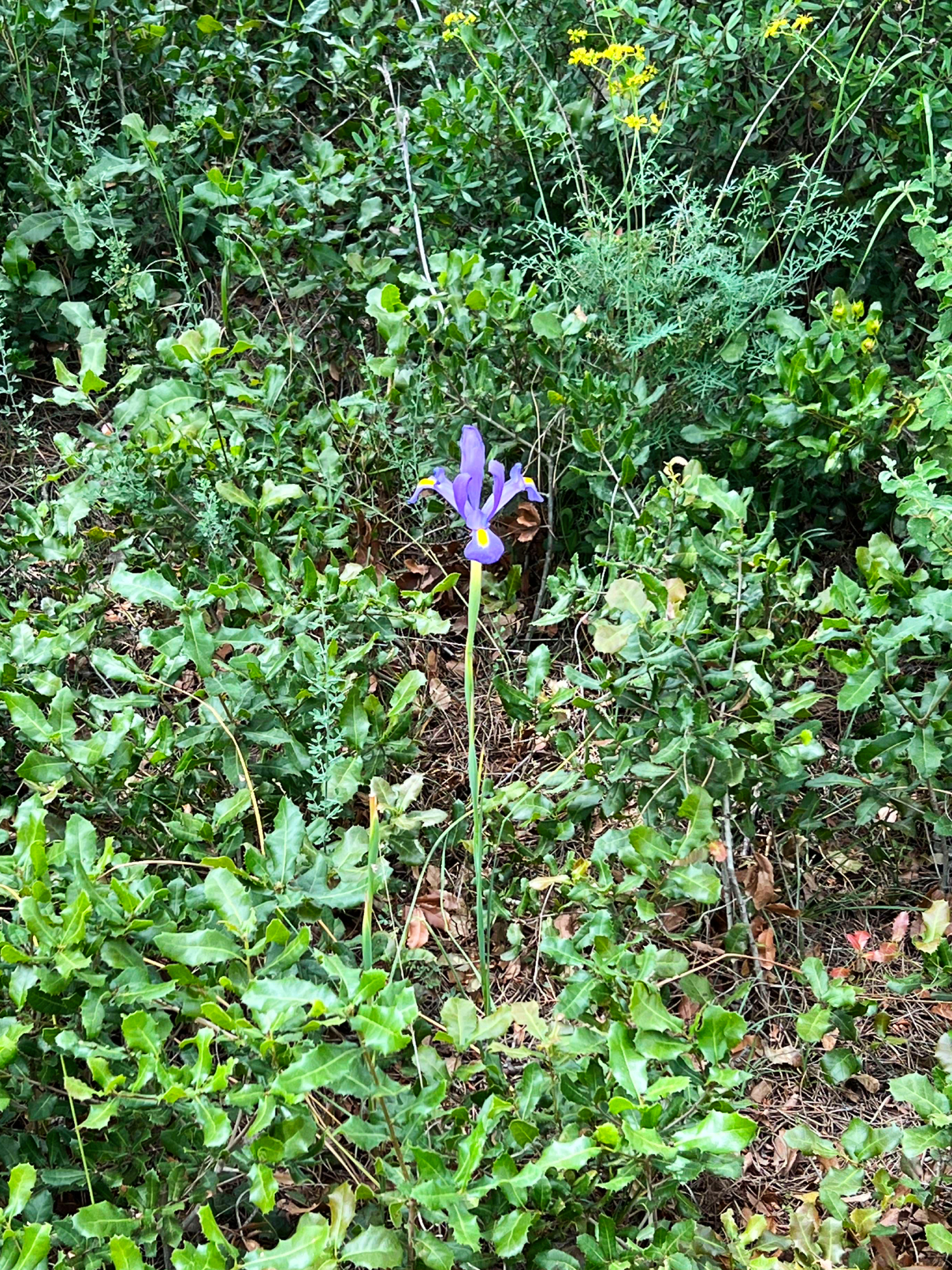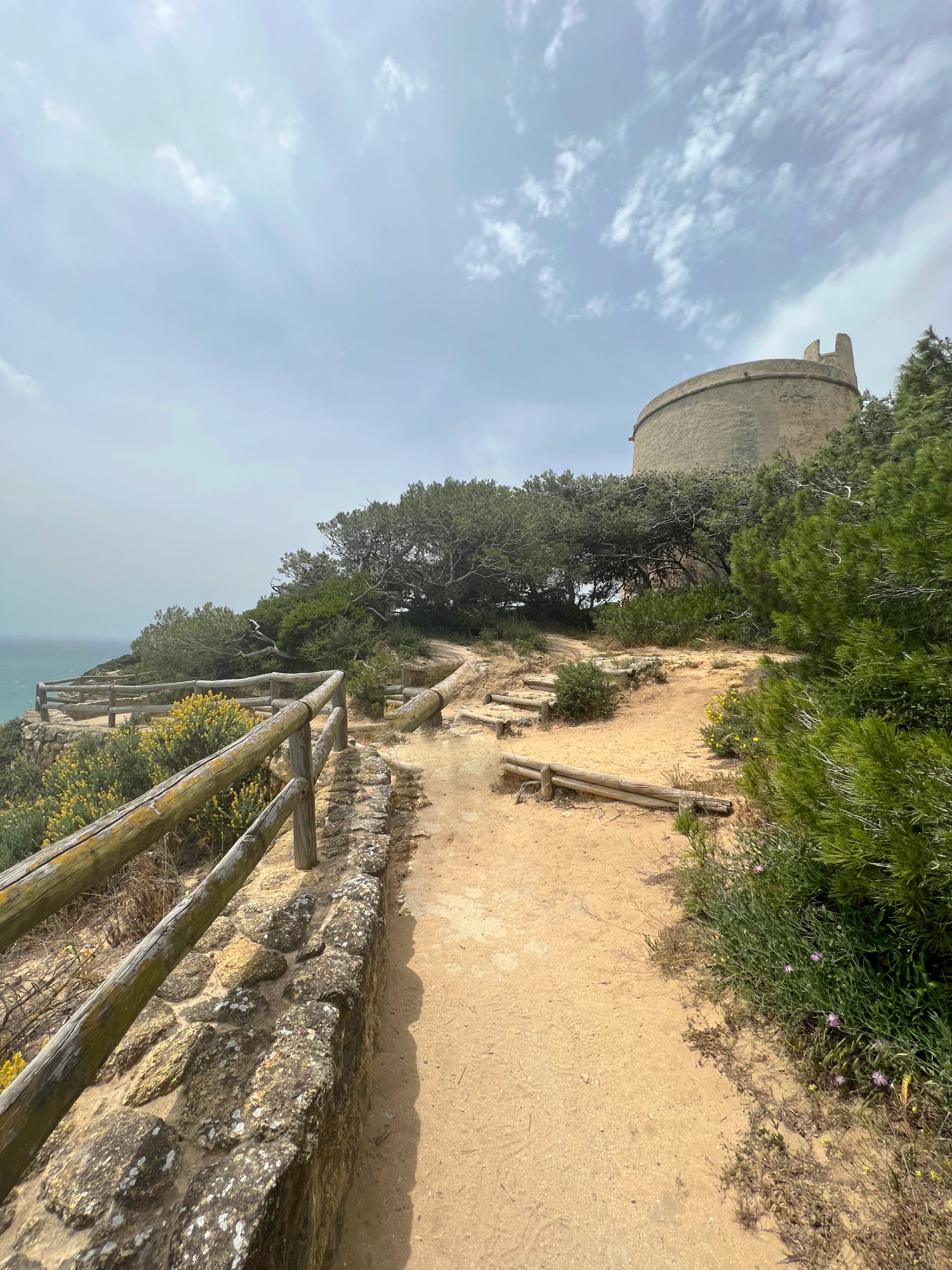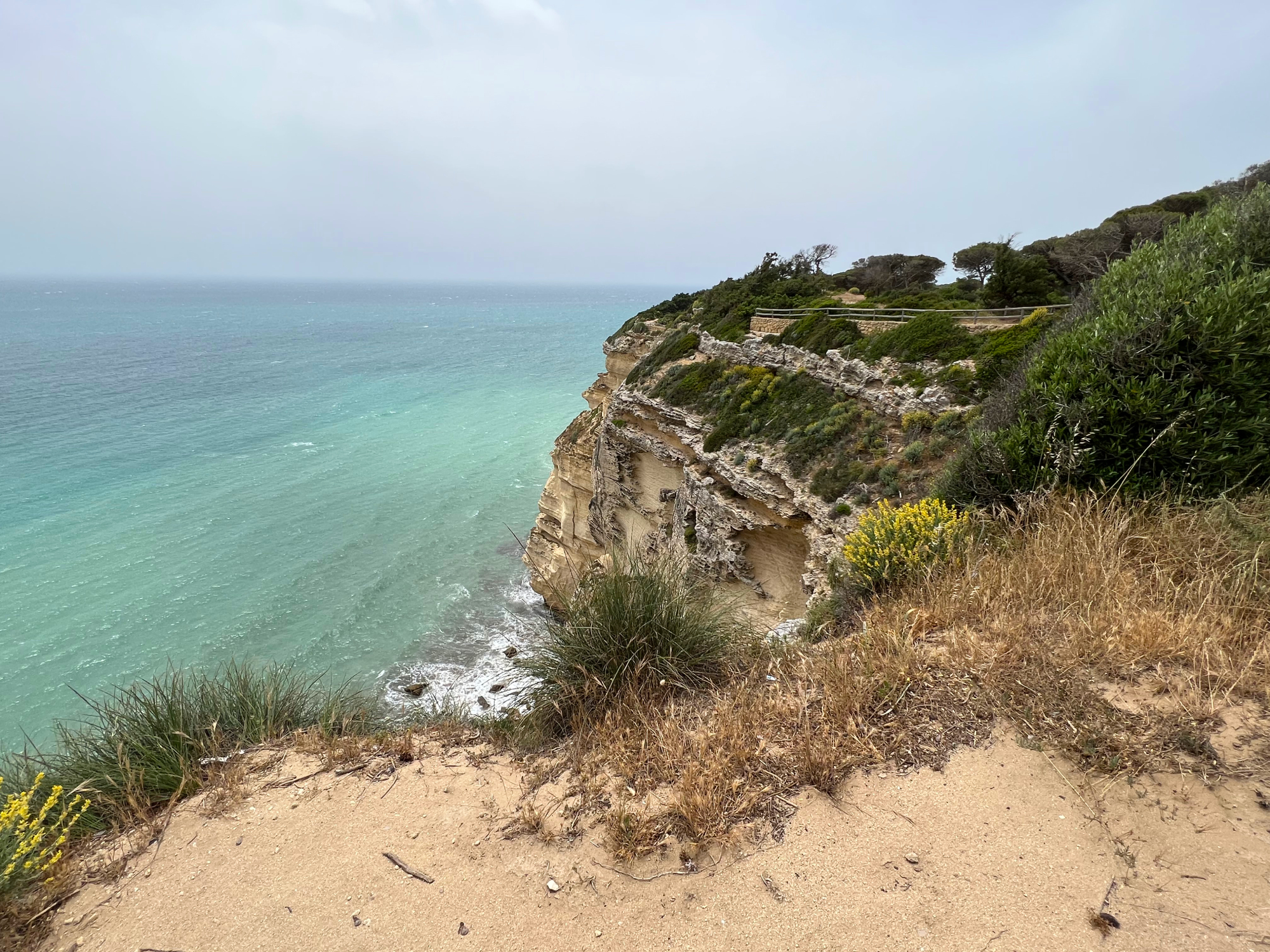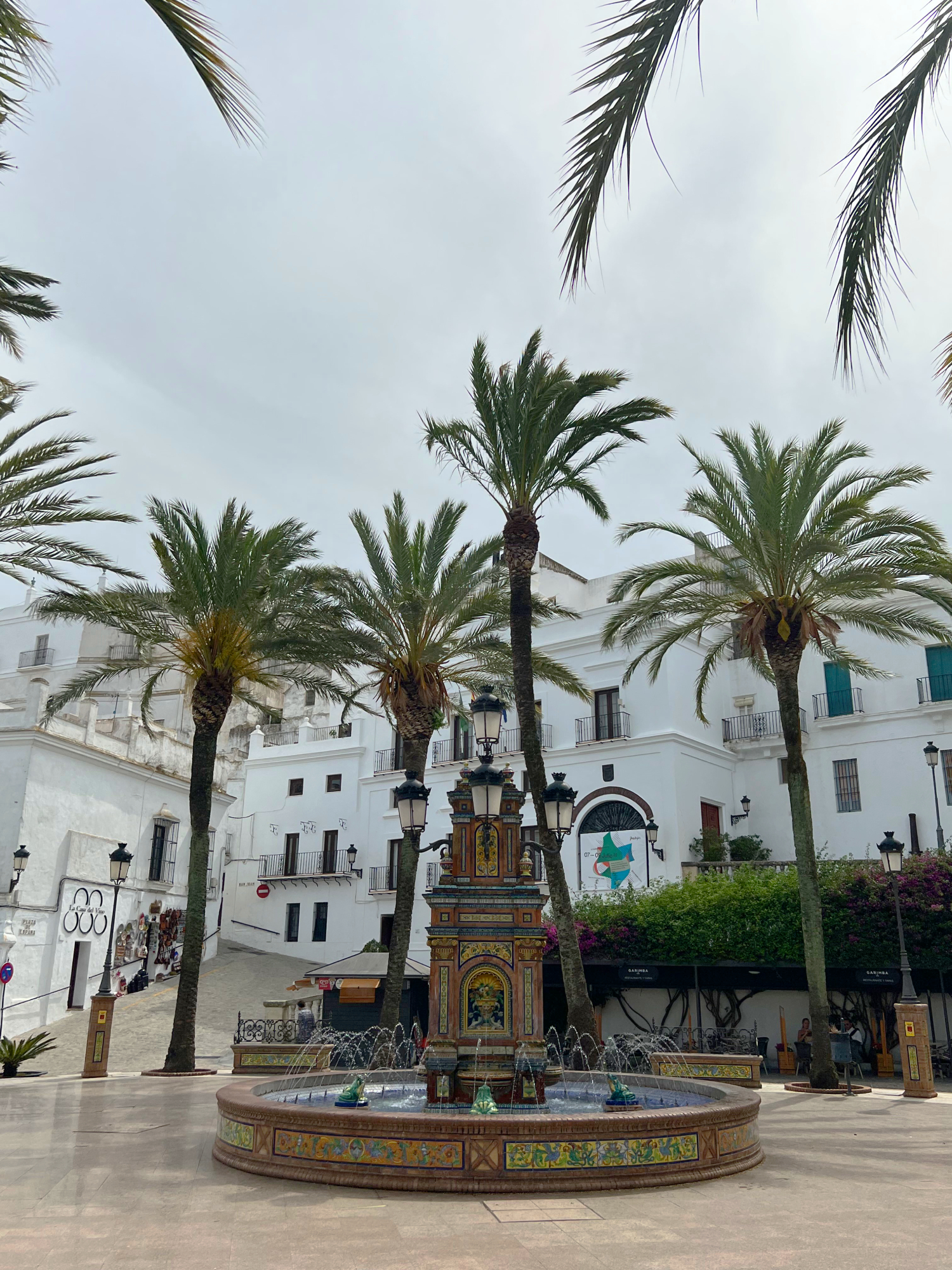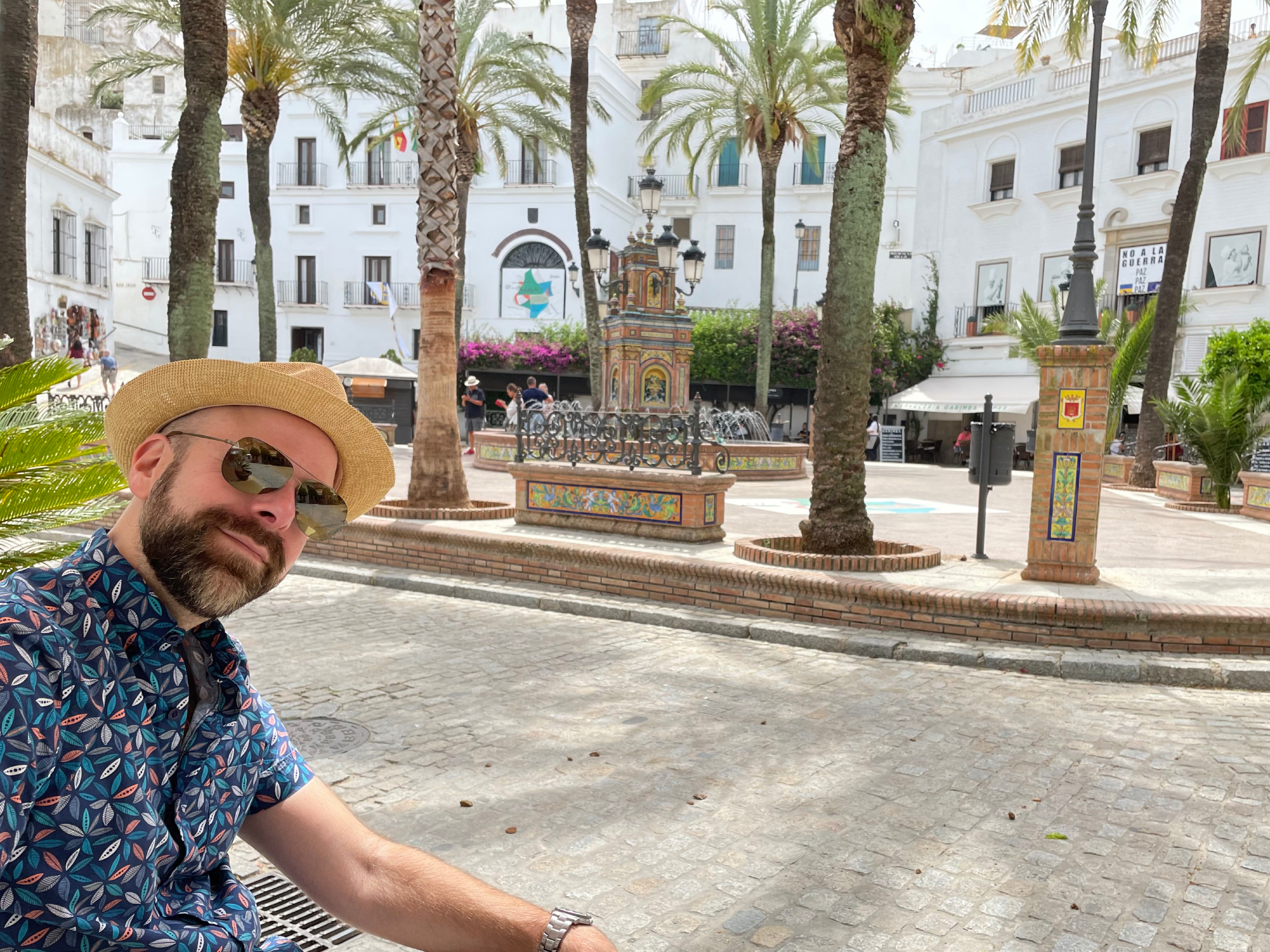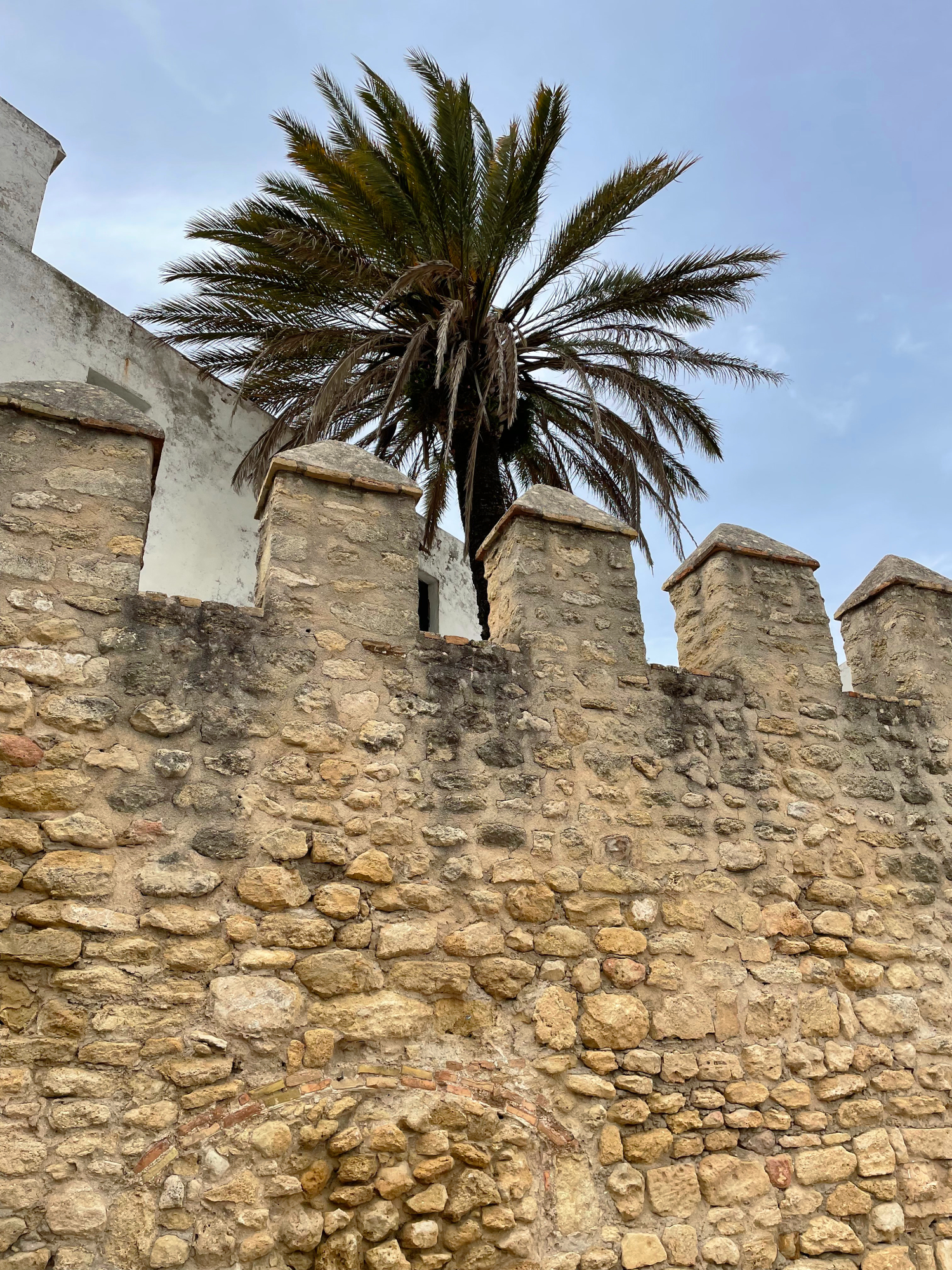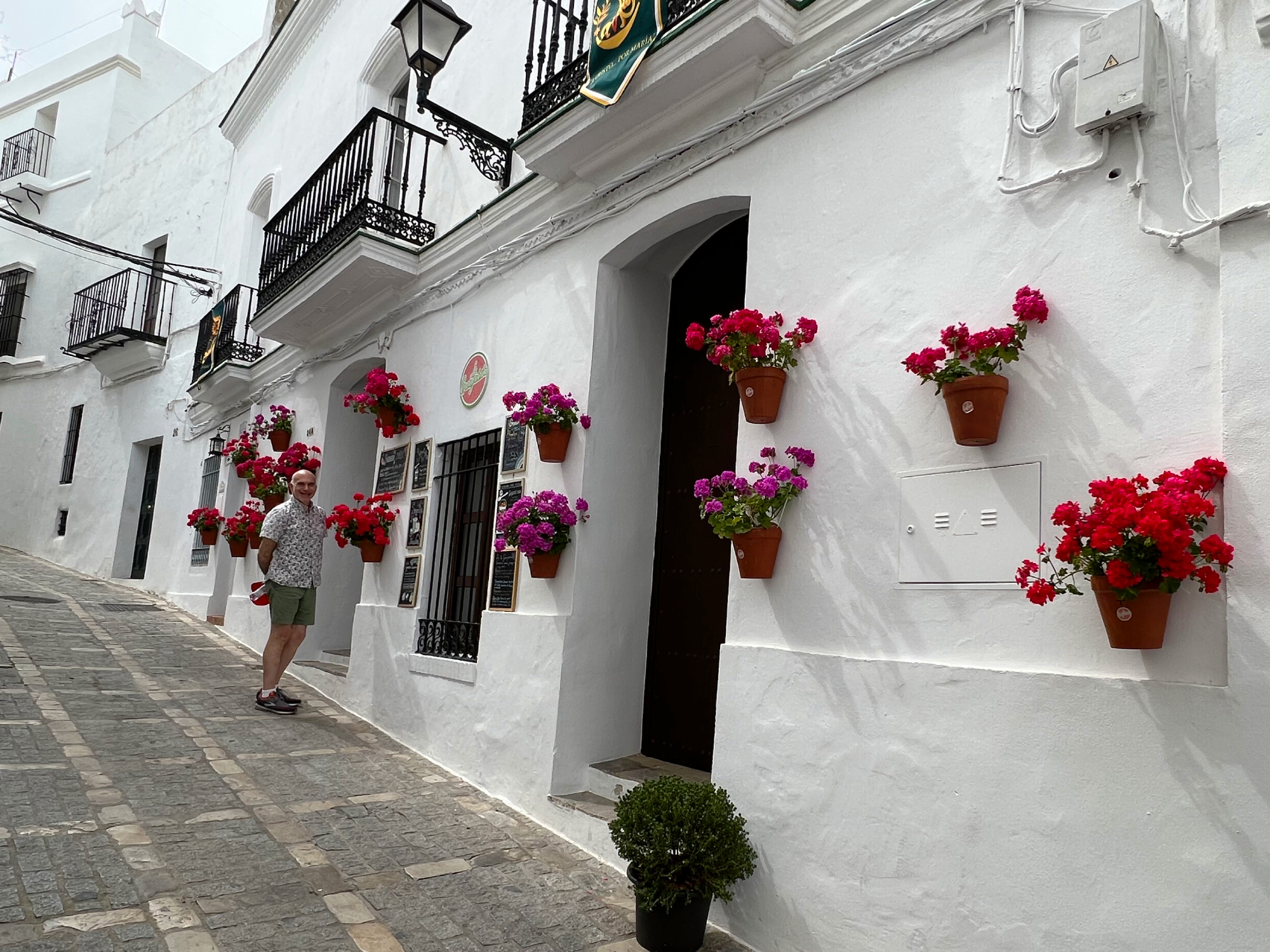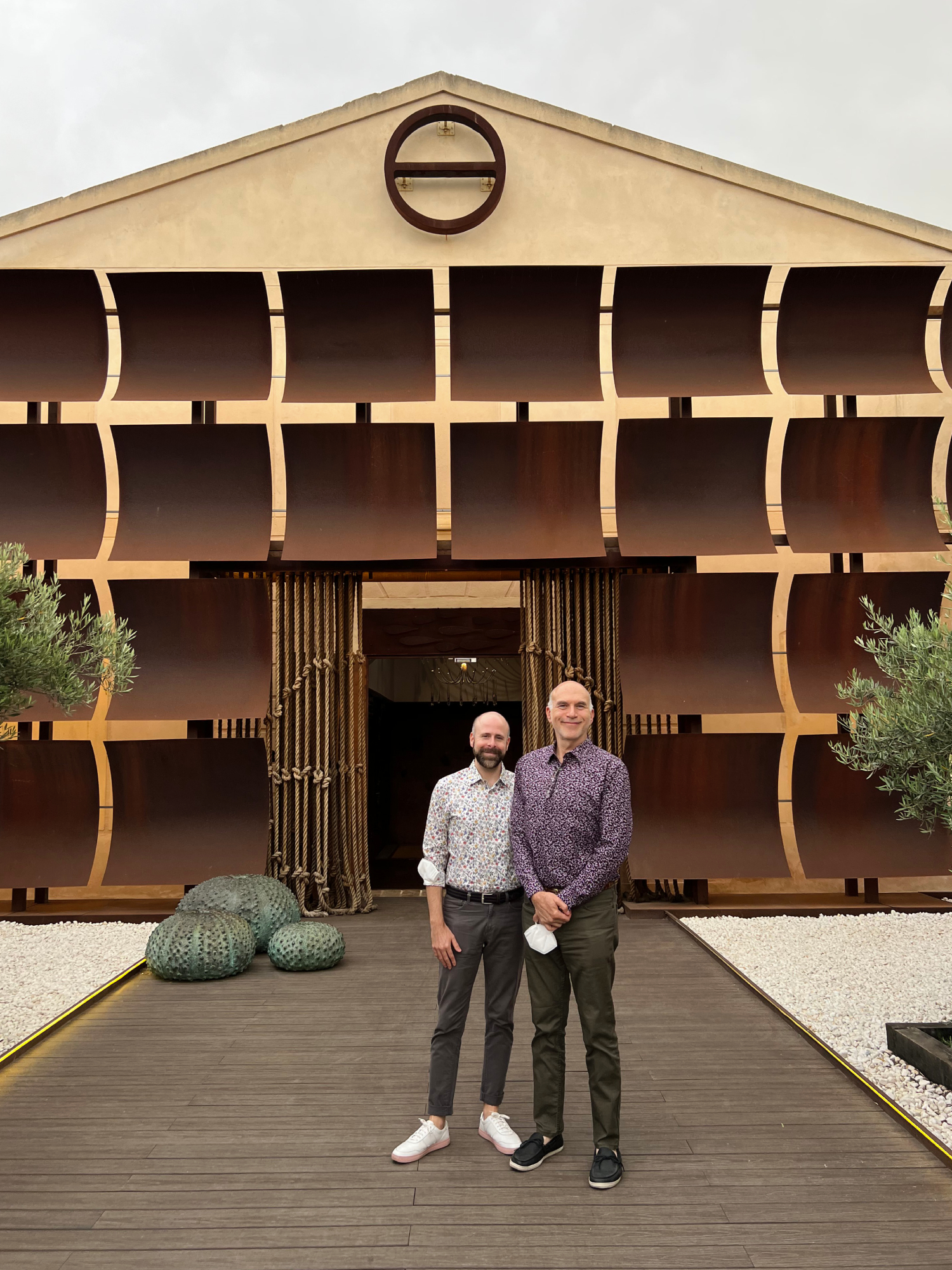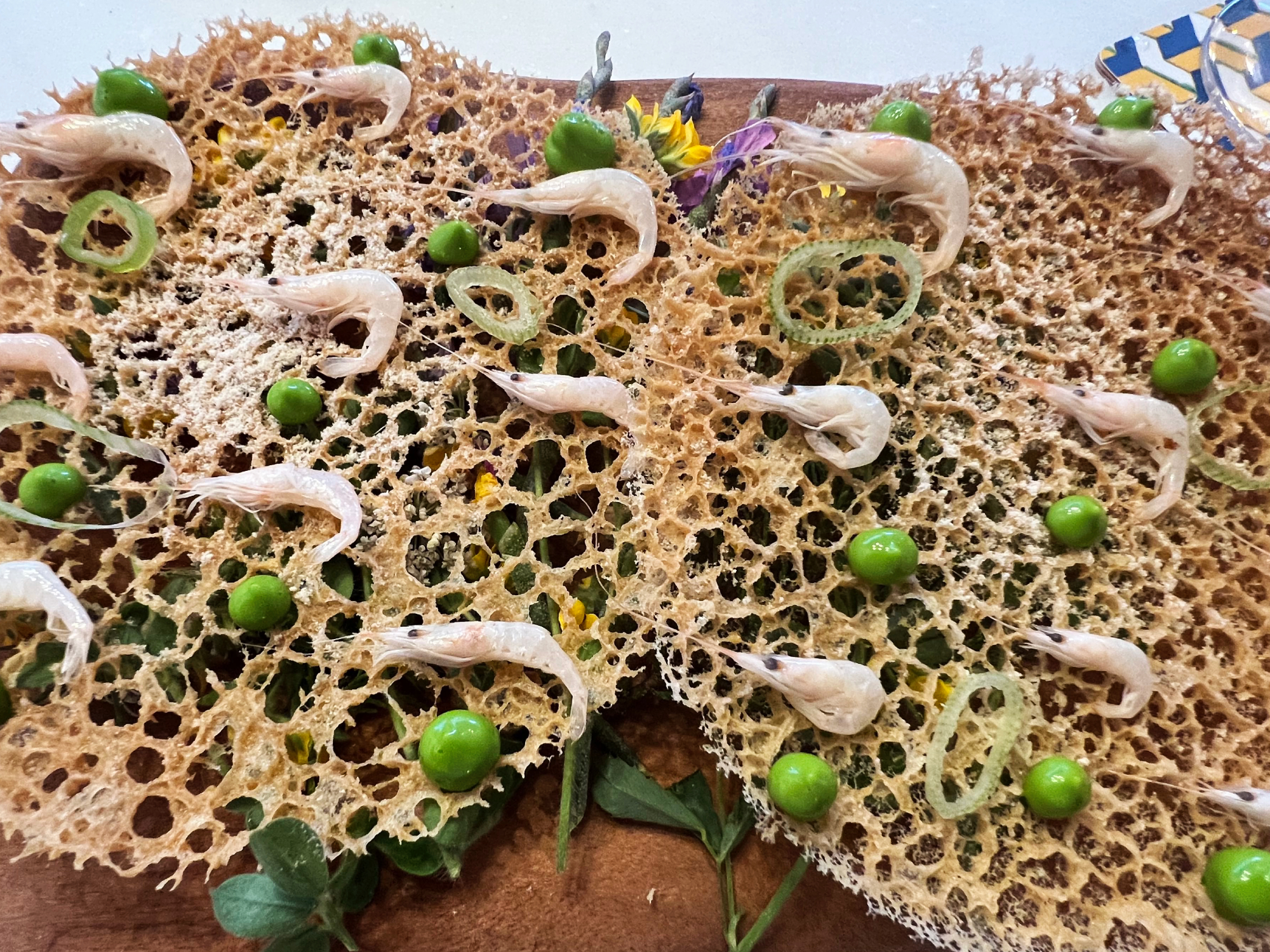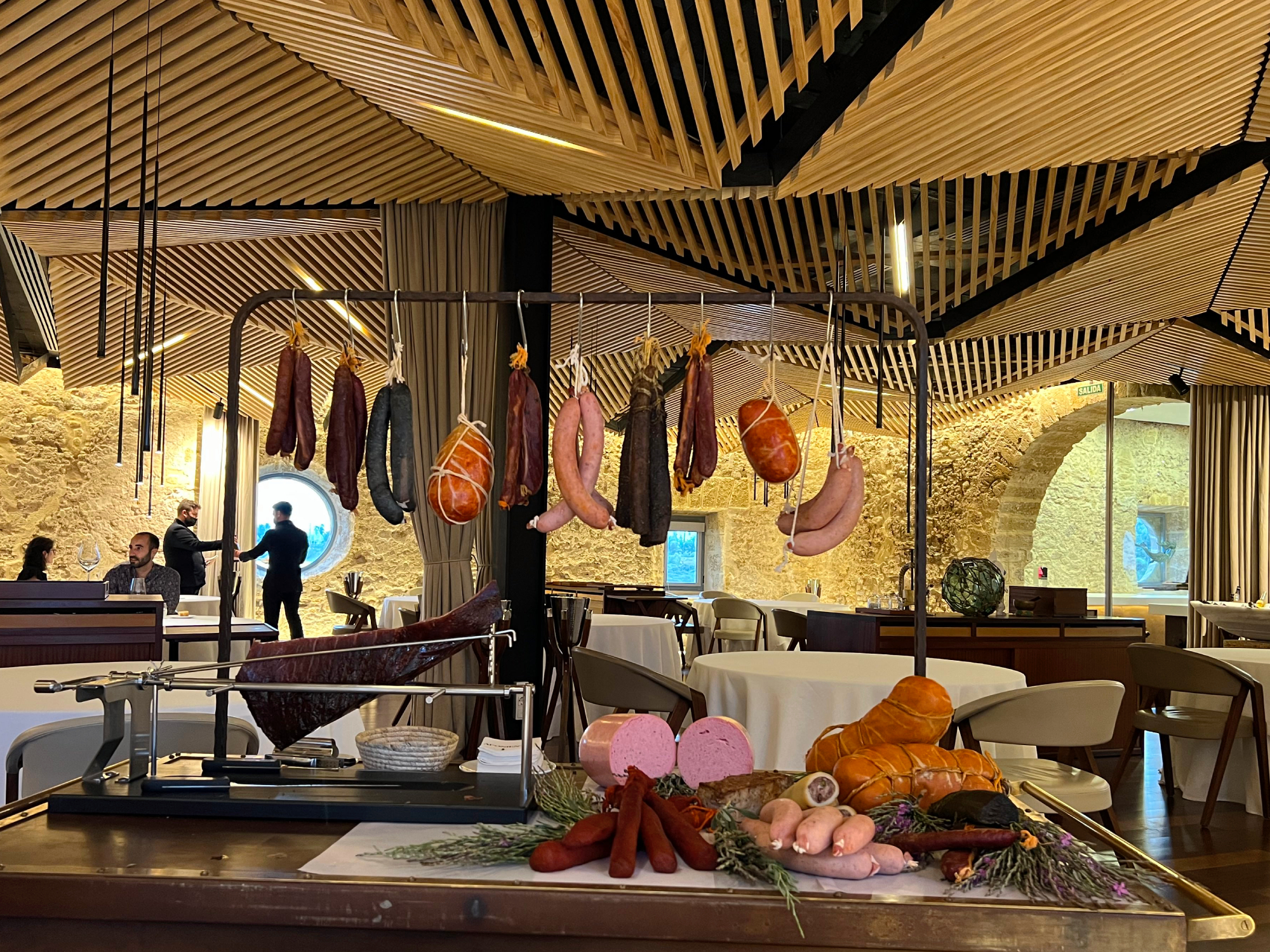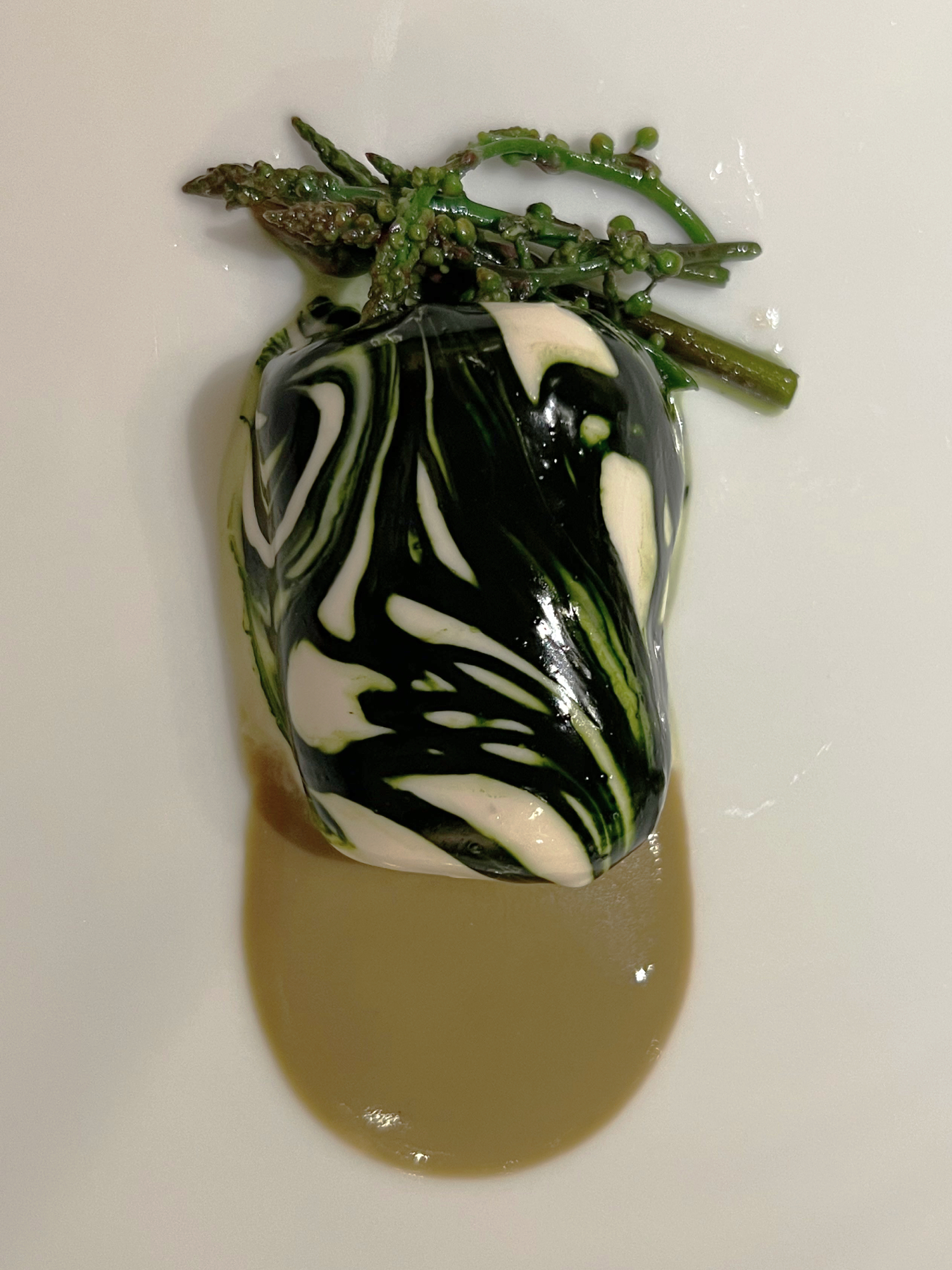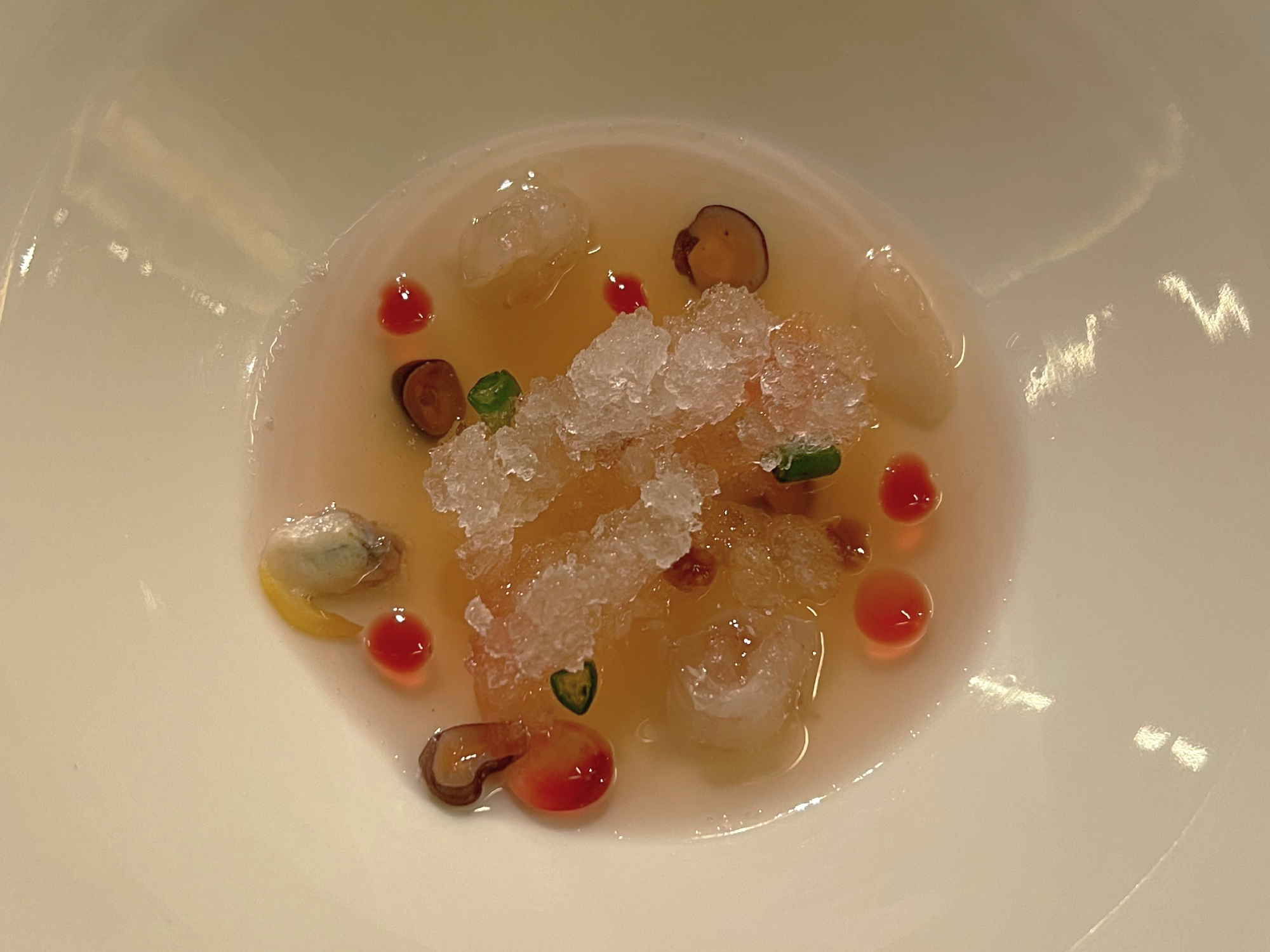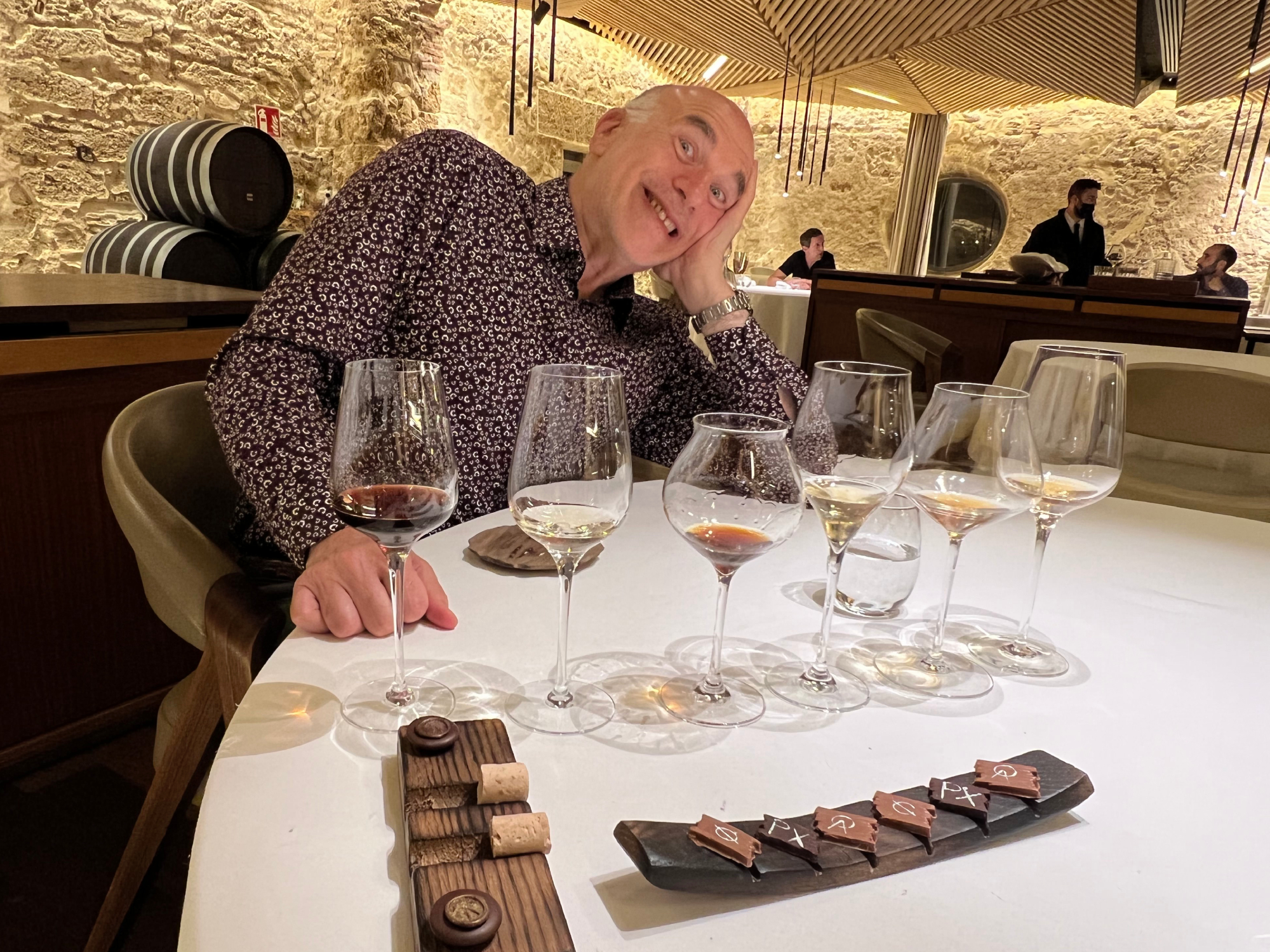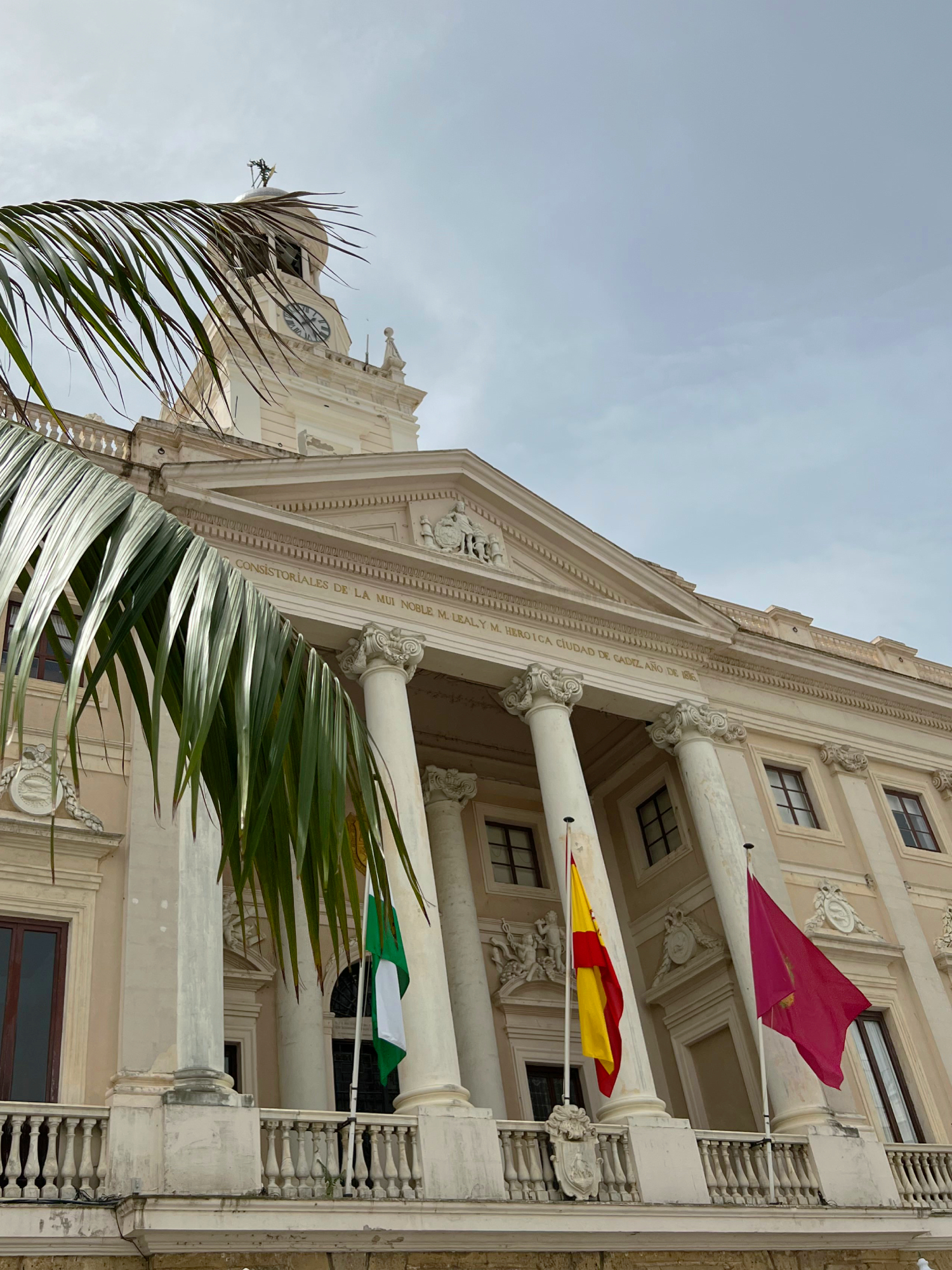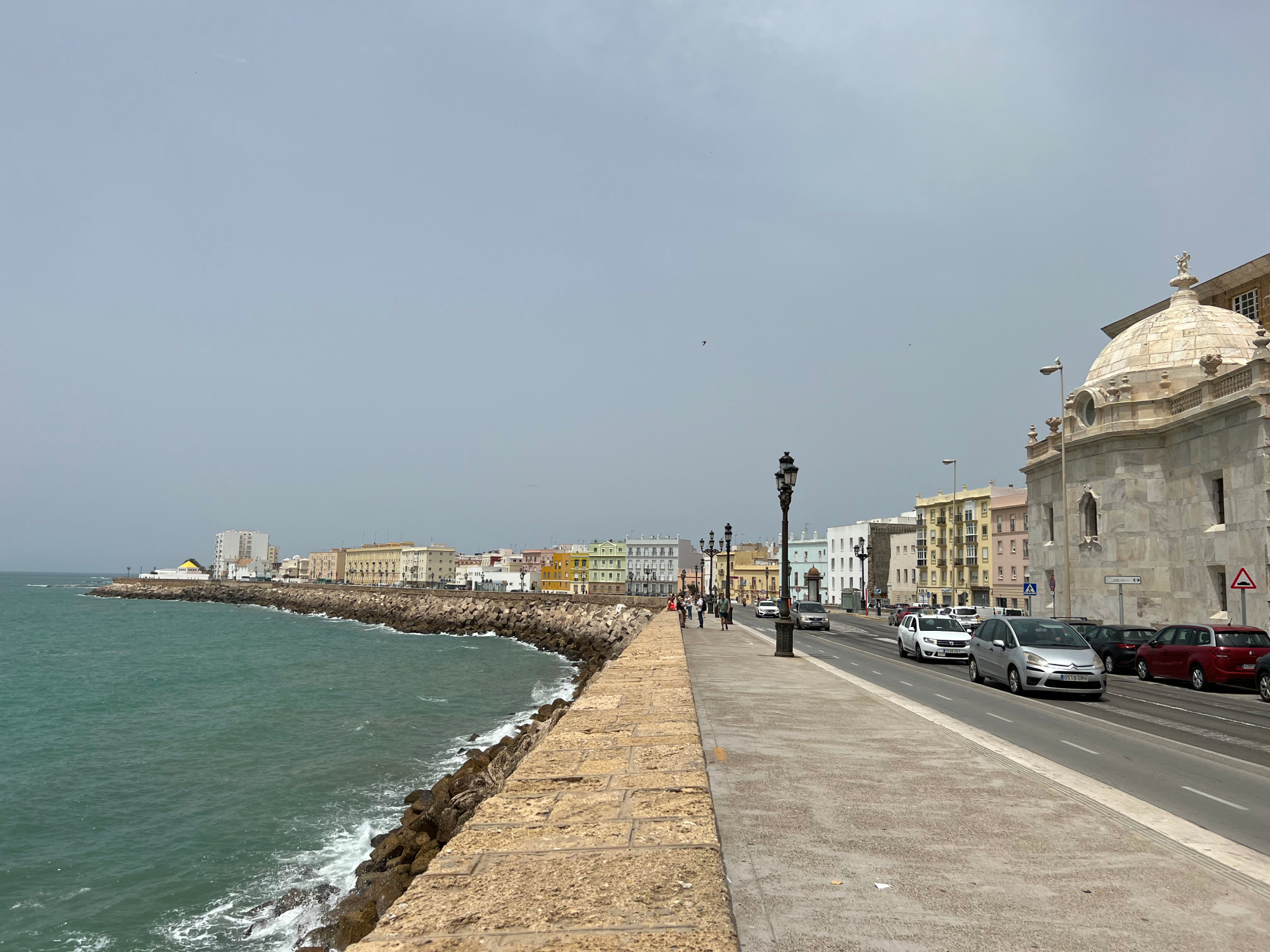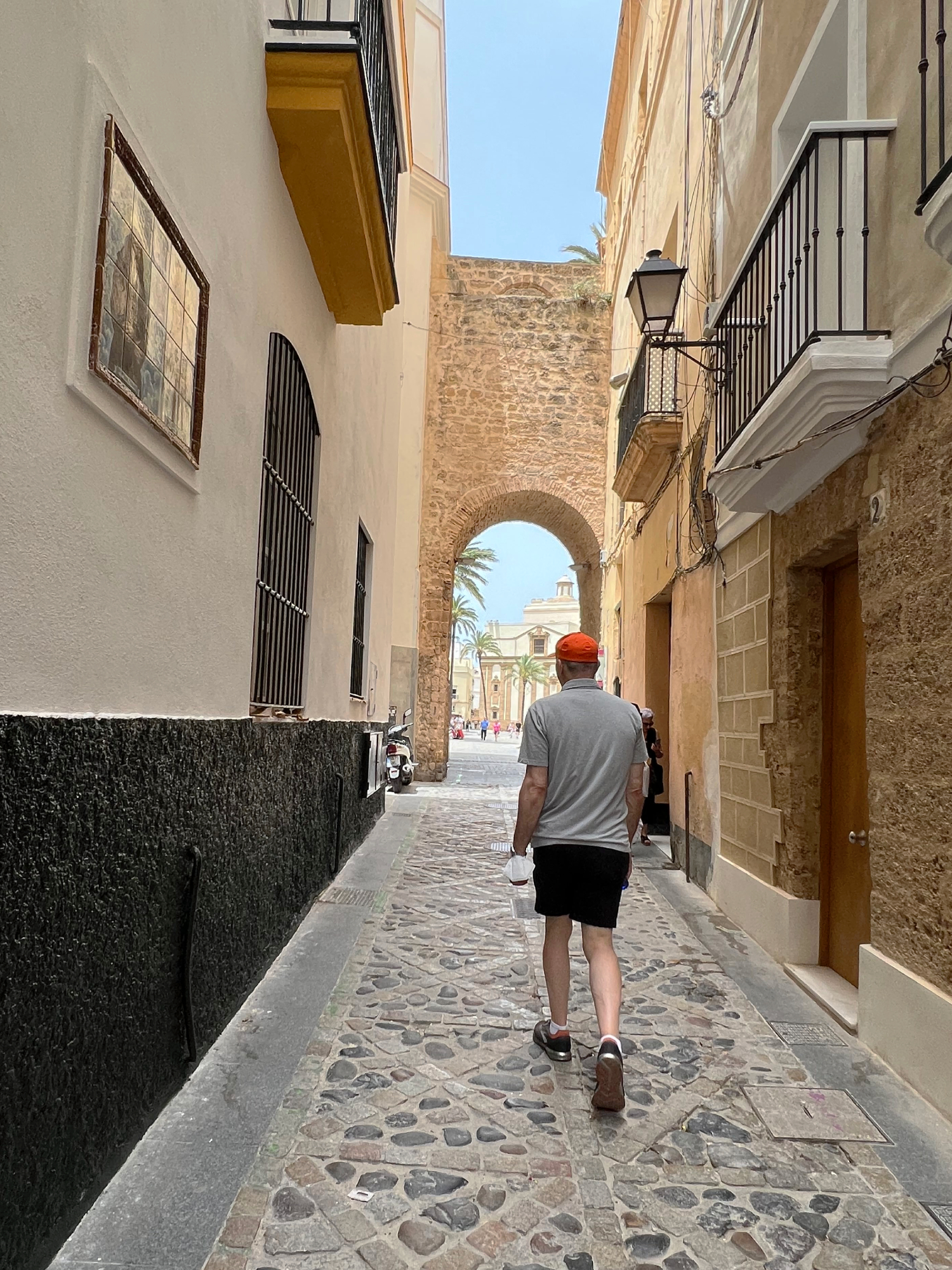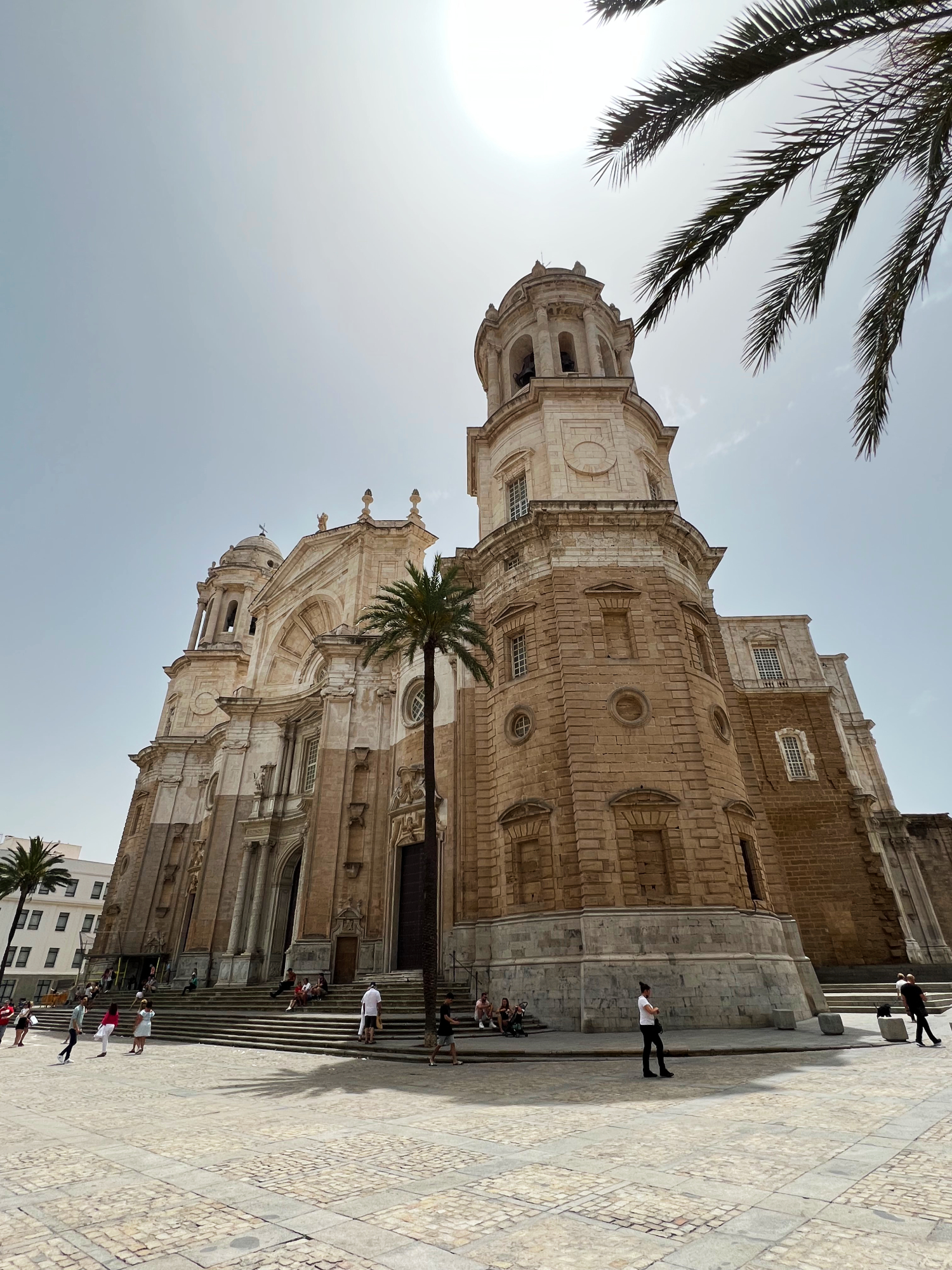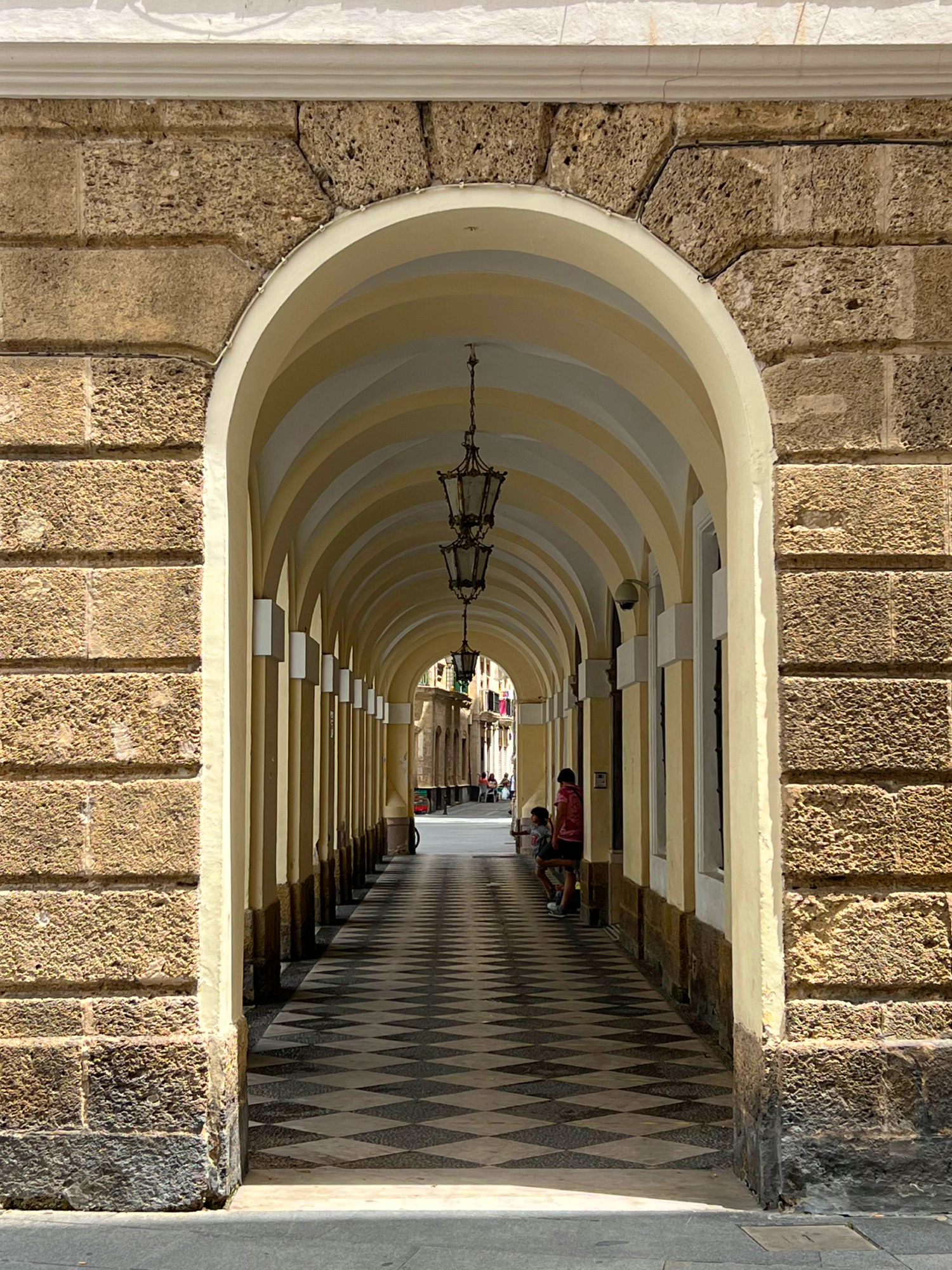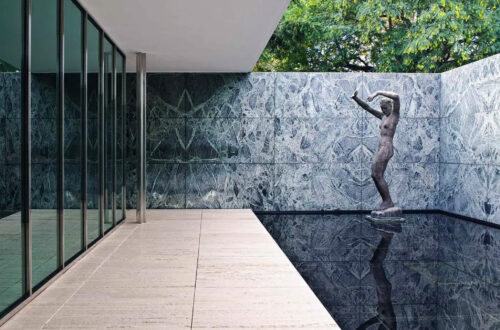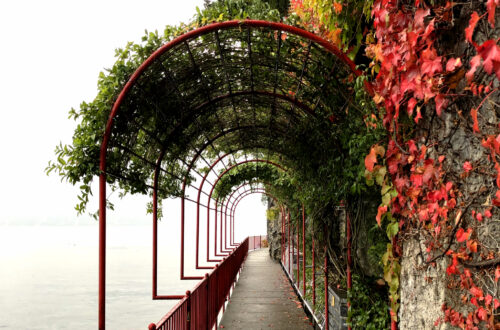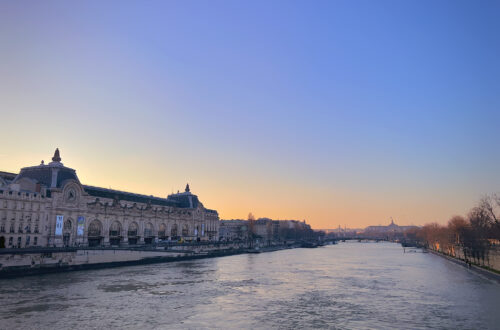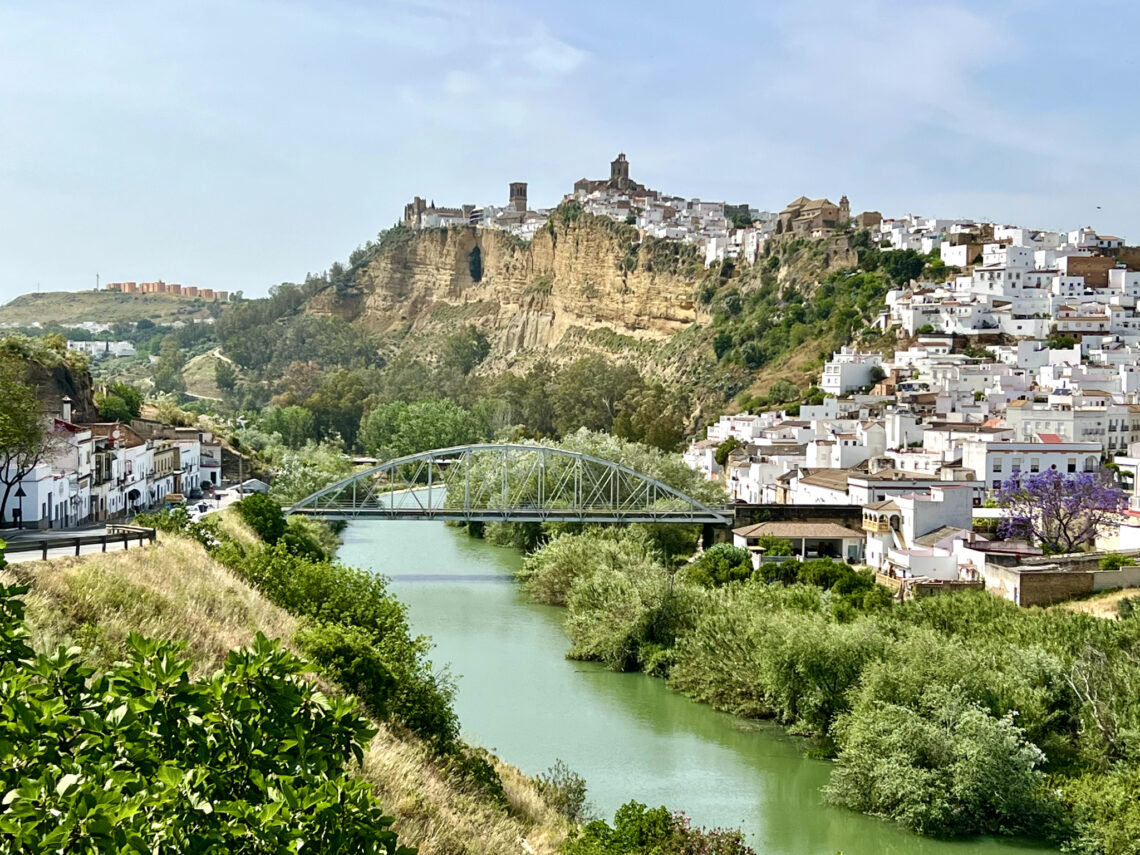
Costa de la Luz, Spain
After Seville, Charles and I headed to the Costa de la Luz, the western portion of Andalusia that abuts the Atlantic Ocean. This region stretches from the Portuguese border all the way down to Tarifa, the southernmost point of the Iberian Peninsula. We stayed in Jerez de la Frontera, the sherry capital of the world, and explored the coast via a rental car. It was the one place on our Spain trip where I felt like we didn’t have enough time…and would go back in a heartbeat to see and experience the rest of the region. Here are some highlights from the time we did spend on the Costa de la Luz:
Jerez de la Frontera
Locally known just as “Jerez,” I loved everything about this tony little city. There are a few givens with any major wine producing region: great food, beautiful scenery, and a general happy-go-lucky quality of the people. Jerez gratifyingly hit all three notes. It has a charming historic center with a maze of cobblestone lanes lined with Moorish-inspired palaces, Gothic and Baroque cathedrals, plazas with pretty fountains, boutiques, restaurants, and bodegas (sherry tasting rooms). A banner hanging across the balcony of city hall read Día Internacional Contra la LGTBIfobia – a very welcoming sign.
We stayed at Casa Palacio María Luisa, a stunning 19th century palatial house that was meticulously converted into a five star boutique luxury hotel. A dramatic two-story entry patio served as the grand foyer, surrounded by archways and a second floor gallery with an effulgent glass atrium. We stayed in the elegantly furnished Jerez Suite, which had a balcony that overlooked a private garden with, to my delight, a massive purple jacaranda in bloom. The service was top notch and the staff super friendly, even though they didn’t fully understand us at times (and vice versa).
Jerez is home to several Michelin-starred dining establishments. We already had plans for an extremely extravagant and celebratory meal while on the Costa de la Luz (more on that below), so I didn’t want to over do it. Fortunately, one of the region’s acclaimed chefs, Israel Ramos, has a gastrobar, Restaurante Albalá, in the heart of Jerez serving top-notch food without all the fanfare…and high prices. This ended up being one of our best meals on the trip. We indulged in a silky green gazpacho with caviar, anchovies, and pickled vegetables; and a roasted suckling lamb shoulder, which was so out-of-this-world good, I literally licked the bone clean.
La Breña y Marismas del Barbate Natural Park
One morning, Charles and I drove down the coast to La Breña y Marismas, a natural park stretching between the beach towns of Zahora and Barbate. The park covers a vast array of ecosystems – salt marshes, rice fields, meadows, sand dunes, and pine groves. We explored the Sendero Las Breñas, a hiking area that sits atop a 300-foot-high bluff running parallel with the ocean. Beneath a canopy of Aleppo and stone pines, we followed a sandy track lined with scrubby lavender, rosemary, fennel, juniper, and wild iris. It was noticeably muggier here than in Jerez where we had started our morning, but a persistent breeze kept us comfortable. The air was filled with the sweet, heady aroma of fresh pine resin, which I find intoxicating and quite soothing. We eventually reached the Mirador Torre del Tajo, a 16th-century watchtower high above the Atlantic with expansive coastal views. In the distance, I could make out the cliffs on the African side of the Strait of Gibraltar. Directly below the precipice we were standing on, choppy aquamarine waves smashed into the sandstone bluff. Spending summers “down the shore” in New Jersey, it was quite a different Atlantic than I was used to.
Vejer de la Frontera
Not far from La Breña is Vejer de la Frontera, a pueblo blanco crowning the top of a hill a few miles inland from the coast. Due to its advantageous position, the town has been a prize for conquerors throughout the ages, starting with the Phoenicians and ending with the Castilians. With its winding streets and whitewashed buildings, Vejer can easily be confused for a village in Morocco’s Atlas Mountains. And like an eagle’s aerie, it offers panoramic views of the entire region.
Charles and I were only in Vejer for a few hours, but were very quickly seduced by its charm. We parked near Torre del Mayorazgo, one of several intact bastions that serve as reminders of the town’s past as a border fortress on the frontier (hence “de la Frontera”). We made our way to Plaza de España, Vejer’s lovingly restored main square. At its center is a palm-ringed Sevillian-style fountain with colorful tiles and four whimsical jetted frogs. Across from the plaza, Charles and I had lunch at El Jardín del Califa, a Moroccan restaurant serving delicious and authentic mezze. We sat at an outdoor table and watched the townspeople go about their day. The tempo was calm, the vibe chill…no one was in a hurry. After lunch, we sauntered around the lazy streets and admired the vibrant arrays of fuchsia and red geraniums, which popped against the whitewashed walls. Had we stumbled upon heaven in this little hilltop town?
Aponiente
Charles and I originally booked our trip to Spain in 2020 to celebrate our 10 year anniversary that summer. I made all the reservations in February…and we all know what happened next. I canceled everything a month later, and waited hopelessly, at times, until the world reopened. When we finally rebooked two years later, it would be our first time traveling to Europe since 2019. I wanted to make our trip extra special and celebratory. Enter Aponiente, the three Michelin-starred temple of seafood helmed by Ángel León, Chef del Mar, located in El Puerto de Santa María, very near our hotel in Jerez. Everything served at Aponiente comes from the sea.
The restaurant is aptly located in an 18th-century stone tide mill spanning the Caño del Molino. As you eat, water from the nearby Guadalete river and Bay of Cádiz cause the caño to surge and recede beneath your feet…the same waters that were used to power the mill to grind wheat hundreds of years ago. Before entering the restaurant, we were cordially greeted by several members of Ángel León’s team and brought to a glass pavilion, where we were served cava and several canapés: squid adobo, marine bacon (tuna) with date, sea urchin, and shrimp fritters. The fritters were the most memorable because they were plated so intricately – resting atop a honeycombed tuile were several perfectly placed pallid pink baby shrimp with scattered beads of an herbed aioli emulsion. Everything was very tasty, and with several refills of cava, we were both feeling jovial and ready to celebrate the last 10, 11 and 12 years of our being together.
Upon entering the restaurant proper, Charles and I were ushered past glass-enclosed prep areas with station chefs hard at work cleaning, chopping, and paring fresh produce. We stopped at a table-top parrilla and were served a final canapé, charcoal sardines, along with a small pour of dry manzanilla. Afterwards, we were seated at our table, where we would spend the next three hours sampling eight savory dishes and three desserts from the Planeta Agua menu. The physical menu was handed to each of us in the form of a whimsically written and illustrated booklet, a memento, depicting Ángel León’s inspiration for his craft. Charles astonished me when he suggested we opt for the wine pairing since he isn’t a very big drinker. But why not? We were celebrating, after all.
The dining room décor was simple and elegant. Ten large white circular tables filled the space, with the mill’s original golden-hued stone covering the walls and a unique ceiling design undulating with triangles shaped by wooden beams. Only nine of the tables were filled, mostly by couples, which made the staff-to-guest ratio really stand out. The menu booklet lists 47 members as part of the crew. There must’ve been ten different people servicing our table – the place setter, the napkin folder, the water filler, the glass replacer, the main server, the sommelier, the bread server, the crumb clearer. I’m missing a few. Charles and I were amazed by their kindness, attentiveness, and efficiency.
Now for the highlights of the meal. Shortly after being seated and settling on the wine pairing, a massive cart was rolled over to our table. Dangling from an iron rod were different types of sausages. A reddish brown hunk of meat that looked like a cured pig’s leg rested on top of a slicing contraption, surrounded by several other slabs of encased meat. Knowing that the restaurant only served seafood, we were both confused. Then our server, Silvia, appeared and explained that everything on the cart was indeed from the sea! Pâté made from monkfish liver. Cuttlefish morcilla. Rockfish mortadella. Red tuna Jamón Ibérico. Our minds were blown. These cured links in front of us looked like they were plucked from a German deli counter. And they all tasted and had a similar texture to what you would find on a charcuterie board. The ingenuity and technique to create these sausages was truly remarkable.
Several courses later, another cart was hauled to our table. This one had a large, hand-cranked slicing device on it. We were told that this device came from Japan and is traditionally used to make the ubiquitous shaved ice treat. Then, another crew member appeared with a white chunk of what we thought was ice, but turned out to be freeze-dried cuttlefish. He placed the block onto the device and cranked out several thin strips, which were then placed in a Japanese-style marinera broth. The strips began to expand once they hit the broth, and they tasted like silky and savory noodles. I love the thoughtfulness and restraint that went into this dish.
After several more courses, like marine vegetables vichyssoise, razor clam amarillo, and seafood porchetta, we were served a clever, colorful frutti de mare salad palate cleanser and presented with the main dessert – a seaweed tarte tatin. Seaweed for dessert? We were perplexed, until digging in and discovering that it tasted just like the French treat made with apples. And, unbelievably (yet believably) so, this dish was entirely marine-based: a puff pastry made from fish scales, slow-roasted and caramelized seaweed, and sweetness produced by extracting glucose from aquatic plants. It was the capstone to an unforgettable evening, thanks to Chef León and his talented crew.
Cádiz
I really wanted to like Cádiz, but unfortunately, upon arriving in the city we discovered three huge cruise liners docked in the harbor – and the streets were crammed with cruisers taking part in their daily excursions. Charles and I were both not feeling the vibe from the get-go, especially since everywhere else we had been along the Costa de la Luz was virtually tourist-free.
I had booked a private tour with a local operator. Our guide, Pablo, was waiting for us in Plaza de San Juan de Dios, which felt a little like Times Square. He gave us a deep dive into the history of the city. Founded by the Phoenicians in the 7th century BC, Cádiz is often regarded as the oldest inhabited city in Western Europe. It juts out on a peninsula into the Bay of Cádiz and is known for its old quarter packed with gracefully decaying buildings and churches, and its wealth of tapas joints serving local specialities from the sea. Just south of the historic center is a long stretch of sandy beach lined with mid-rise hotels and apartment complexes facing the ocean; this area is locally known as Cádizfornia. (::eyeroll::)
From Plaza de San Juan de Dios, we followed Pablo to the partially and relatively newly excavated (1980) remains of a Roman theater, built during the 1st century BC. The theater was abandoned with the fall of the Roman empire, and covered by a Castilian fortress in the 13th century. Nextdoor, Phoenican sarcophagi were on display behind a wall of glass. So much history in one small space! We spent some time learning about the large, Baroque-style Catedral de Cádiz, which was known as “The Cathedral of the Americas” because it was built with the riches gained during the golden age of trade between Spain and the Americas. The church backs up to the Campo del Sur and the Paseo del Vendaval, a walkway that runs along the water’s edge and wraps around the tip of the peninsula. We would learn that the view looking north along the campo doubled as the Havana skyline in several films, including Die Another Day in the James Bond series.
Charles and I were both kvetchy – too many tourists, too much humidity, and we were still a bit hungover from our celebratory dinner the night before. We cut things short with Pablo and headed back to Jerez for a quiet afternoon at our hotel. Thankfully, Cádiz isn’t going anywhere anytime soon. I’d love to go back in the low season and explore the city on our own.
Last visited in May, 2022




